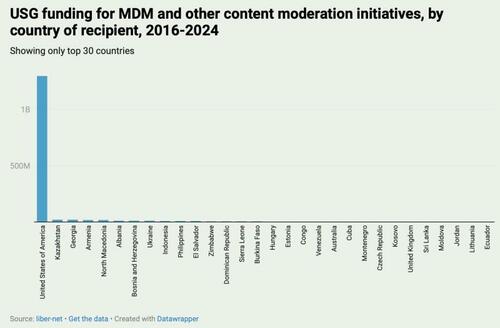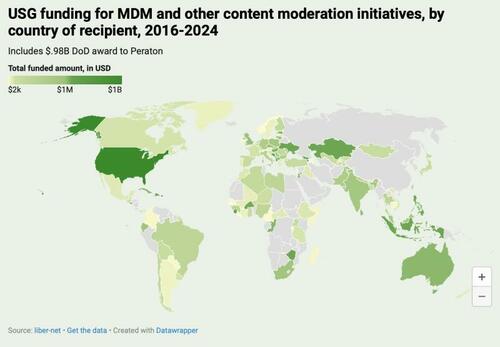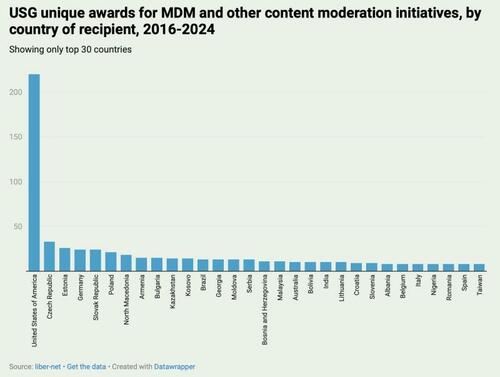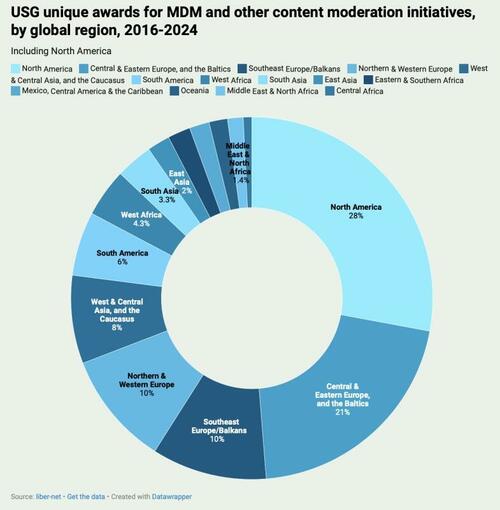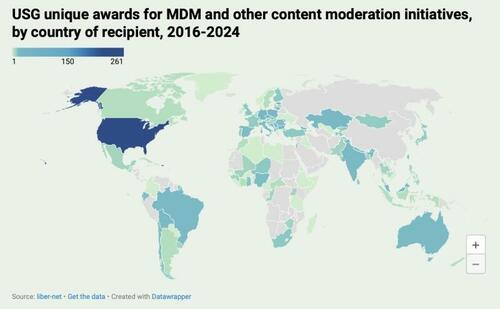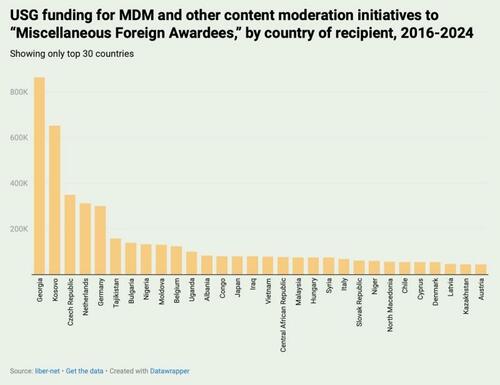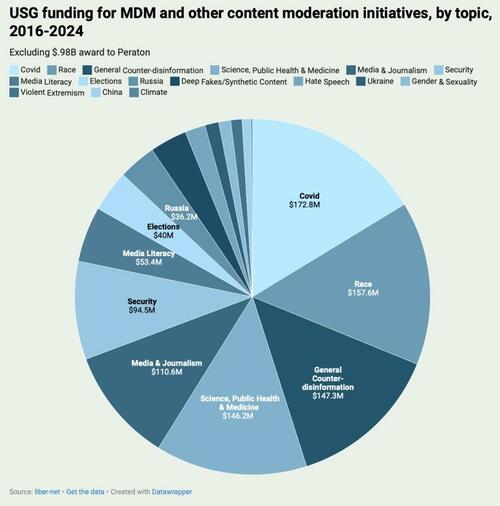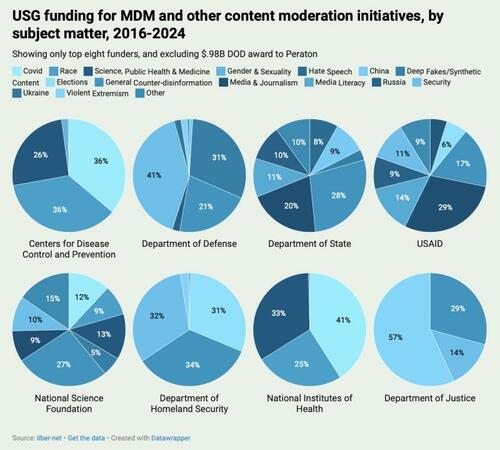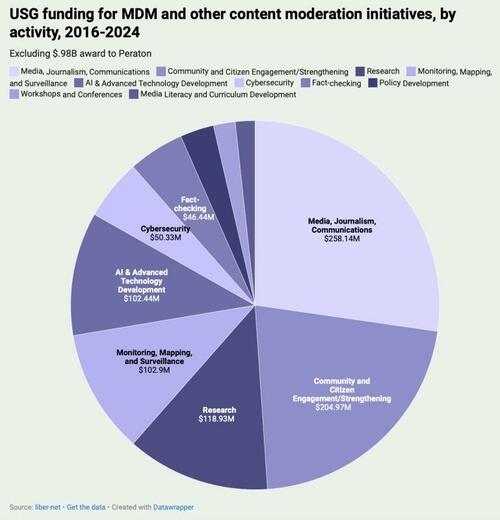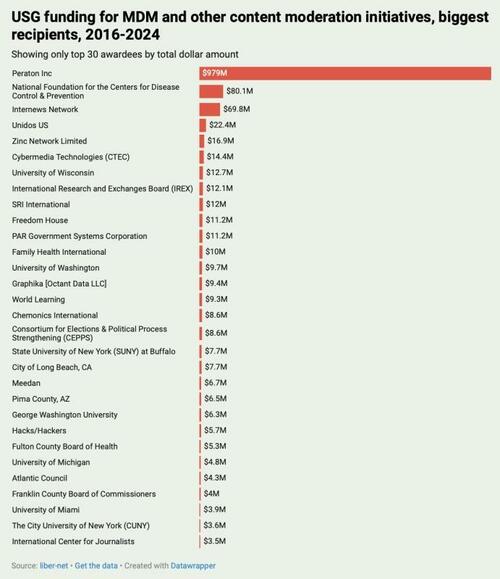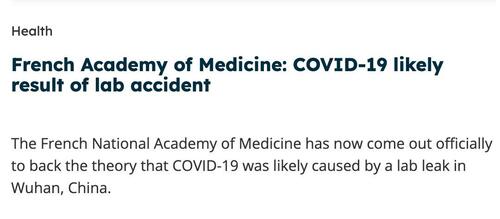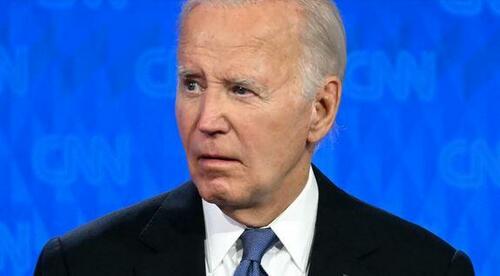To live without faith, without a patrimony to defend, without a steady struggle for truth – that is not living, but existing.
Distinction Matter - Subscribed Feeds
-
Site: southern orders
I am watching Fox and Friends Weekend this Saturday morning, May 10th. They just had a great and fun interview with Pope Leo’s older brother. He said he watched the election of his brother on Fox!
Then, Fox and Friends had a clip of children at a Catholic elementary school going wild when they learn the new pope is American and they begin chanting the MAGA chant USA! USA! USA! You can’t make this stuff up!
Then, Fox and Friends host, Rachel Compos-Duffy, said that one of the greatest things that divides American Catholics was Pope Francis’ cruel suppression of the TLM in this country and elsewhere. But she reported that Pope Leo XIV prior to becoming pope, during the time that Summorum Pontificum was in force celebrated the TLM. She said, in the most synodal way, that Pope Leo XIV needs to heal the hurt and confusion that Pope Francis caused to those who embraced the letter and the law of Summorum Pontificum!
She also made the point that his first Mass as pope was in Latin. But even Pope Francis did that at his first Mass with Cardinals. And Pope Francis, not consistency or with any logic, did celebrate various papal Masses at the Vatican in Latin. Some in the media don’t understand that the new Mass can still be celebrated in Latin with local decisions about that.
What Fr. Z says about the TLM teaching us priests about who we are is true and I know this from experience and that the Modern Missal has a tendency to water this down.
But then Fr. Z reported the following:
There are lots of rumors going around that Papa Prevost has celebrated the TLM. Some say this forcefully. I would like to think so, especially because I think that EVERY priest should know how to say it! The TLM teaches priests about who they are. Over time the gains are great and the knock on effects are significant.
-
Site: Zero HedgeIndia And Pakistan Agree To US-Mediated "Full & Immediate Ceasefire"Tyler Durden Sat, 05/10/2025 - 08:40
India and Pakistan, both nuclear-armed nations, appeared to be spiraling toward broader conflict on Saturday, setting the stage for another day of scary headlines that could trigger World War III. But just moments ago, President Trump announced on Truth Social that India and Pakistan have "agreed to a FULL AND IMMEDIATE CEASEFIRE."
"After a long night of talks mediated by the United States, I am pleased to announce that India and Pakistan have agreed to a FULL AND IMMEDIATE CEASEFIRE," Trump said.
The president continued, "Congratulations to both Countries on using Common Sense and Great Intelligence. Thank you for your attention to this matter!"
Trump's announcement is a surprise, but it comes after US Secretary of State Marco Rubio began back-and-forth diplomacy to end the weeks-long confrontation between India and Pakistan.
The Guardian provided more color on Rubio's diplomatic mission:
Rubio has been engaged in back-and-forth diplomacy between the two countries in recent days, calling for de-escalation as India and Pakistan have been engaged in daily clashes since Wednesday.
The US's top diplomat "continued to urge both parties to find ways to de-escalate and offered US assistance in starting constructive talks to avoid future conflicts," state department spokesperson Tammy Bruce said in a statement on Saturday.
About 25 minutes after Trump's Truth Social post, Rubio wrote on X:
Over the past 48 hours, @VP Vance and I have engaged with senior Indian and Pakistani officials, including Prime Ministers Narendra Modi and Shehbaz Sharif, External Affairs Minister Subrahmanyam Jaishankar, Chief of Army Staff Asim Munir, and National Security Advisors Ajit Doval and Asim Malik.
I am pleased to announce the Governments of India and Pakistan have agreed to an immediate ceasefire and to start talks on a broad set of issues at a neutral site.
We commend Prime Ministers Modi and Sharif on their wisdom, prudence, and statesmanship in choosing the path of peace.
Over the past 48 hours, @VP Vance and I have engaged with senior Indian and Pakistani officials, including Prime Ministers Narendra Modi and Shehbaz Sharif, External Affairs Minister Subrahmanyam Jaishankar, Chief of Army Staff Asim Munir, and National Security Advisors Ajit…
— Secretary Marco Rubio (@SecRubio) May 10, 2025Earlier, G7 foreign ministers issued a joint statement calling for "immediate de-escalation" between the two countries.
UK Foreign Secretary David Lammy and his counterparts in Canada, France, Germany, Italy, Japan, and the US urged "maximum restraint from both" countries. They cautioned that "further military escalation poses a serious threat to regional stability."
"We call for immediate de-escalation and encourage both countries to engage in direct dialogue towards a peaceful outcome," said the G7 foreign ministers.
X user Matt Van Swol wrote: "How many hats can Marco Rubio wear and still deliver incredible results???? This is absolutely amazing."
-
Site: RT - News
The agreement was reached following a “long night of talks” mediated by Washington, the US president has said
India and Pakistan have agreed to cease hostilities, US President Donald Trump has said, adding that a deal was reached following a “long night of talks” mediated by Washington.
Pakistani Foreign Minister Ishaq Dar has confirmed that a deal was reached but did not mention US involvement. New Delhi has said the truce came into effect at 5 pm local time.
“I am pleased to announce that India and Pakistan have agreed to a full and immediate ceasefire,” Trump wrote in a post on Truth Social on Saturday. He also hailed both sides for demonstrating “common sense and great intelligence.”
US Secretary of State Marco Rubio also said that the two neighbors had decided to “start talks on a broad set of issues at a neutral site.” According to Rubio, he and US Vice President J.D. Vance were involved in talks with senior Indian and Pakistani officials over the past 48 hours, including Prime Ministers Narendra Modi and Shehbaz Sharif, India’s top diplomat, Subrahmanyam Jaishankar, and Pakistani Chief of Army Staff Asim Munir.
Shortly after the announcement, India’s Foreign Ministry said that the heads of military operations of the two nations had agreed to cease all hostilities in a phone call earlier on Saturday initiated by the Pakistani side. Pakistani Foreign Minister Ishaq Dar took to X to say that “Pakistan and India have agreed to a ceasefire with immediate effect.”
Read more Tensions rise as Pakistan launches military campaign against India: What we know so far
Tensions rise as Pakistan launches military campaign against India: What we know so far
The truce follows a brief but rapid military escalation between the two nuclear powers. Earlier this week, New Delhi launched ‘Operation Sindoor’, a series of strikes on suspected terrorist facilities in Pakistan and Pakistan-administered Kashmir. The strikes were in retaliation for a terrorist attack in April in the India Union Territory of Jammu and Kashmir that claimed the lives of 26 civilians.
The attack was initially claimed by “The Resistance Front”, a group believed to be linked to the Pakistani-based jihadist organization Lashkar-e-Taiba. New Delhi said its investigators had been able to identify communication nodes of terrorists in and to Pakistan. Islamabad has vehemently denied that it had any role in the attack and has called for an impartial probe.
Islamabad has condemned India’s actions as a “heinous provocation” and responded with shelling across the Line of Control, the de facto border between the countries in Kashmir, as well as with drone strikes. Late on Friday, Pakistan announced that it had launched a large-scale military operation against India called ‘Bunyan Al Marsoos’ (Unbreakable Wall) in what it called retaliation for the Indian strikes. Strikes targeting Indian military sites ensued.
-
Site: southern orders
Pope Leo XIV to Cardinals: Church must respond to digital revolutionIn his first address to the College of Cardinals, Pope Leo XIV invokes the legacy of both Pope Francis and Pope Leo XIII, saying that he wants the Church to "respond to a new industrial revolution and to the development of artificial intelligence."
Leo XIV, a (pontifical) name that illustrates an entire program.
It is Pope Prevost himself who explains the “main reason” for this choice in his first meeting with the cardinals - all the cardinals of the Sacred College, not just those who elected him in the Conclave - received this morning behind closed doors in the Synod Hall. And that is the clear reference to Leo XIII who, at the end of the 19th century, with the historic encyclical Rerum Novarum “addressed the social question in the context of the first great industrial revolution”. Today the Church offers everyone its heritage of social doctrine to respond to another industrial revolution and the developments of artificial intelligence, which bring new challenges for the defense of human dignity, justice and work
In the wake of the Council and with the legacy of Francis
Therefore, a bridge between past and present is this decision of Leo XIII who, looking to the future, in his speech (preceded by a prayer in Latin) illustrates to the cardinals the guidelines of the pontificate just begun: "Truth, justice, peace and fraternity", "principles of the Gospel that have always animated and inspired the life and work of the family of God".
All this in the wake of the Second Vatican Council, to which the Pope asks his closest collaborators for "full adhesion", collecting the strong legacy of Pope Francis who of that historic assembly "recalled and masterfully updated the contents in the Apostolic Exhortation Evangelii gaudium".
Of the first apostolic exhortation, the roadmap of Bergoglio’s pontificate, Pope Leo XIV underlines some fundamental instances: “the return to the primacy of Christ in the proclamation”, first of all, then “the missionary conversion of the entire Christian community; growth in collegiality and synodality; attention to the sensus fidei, especially in its most proper and inclusive forms, such as popular piety; loving care for the least and the discarded; courageous and trusting dialogue with the contemporary world in its various components and realities”.
The support of the cardinals
On this journey, the newly elected Pope asks to be accompanied by his brother cardinals, so as to support him “in accepting a yoke clearly far superior to my strength, as to that of anyone”.
Your presence reminds me that the Lord, who entrusted me with this mission, does not leave me alone in carrying its responsibility. I know first of all that I can always count on his help, the help of the Lord, and, by his Grace and Providence, on your closeness and that of so many brothers and sisters throughout the world who believe in God, love the Church and support the Vicar of Christ with prayer and good works. Pope Leo’s gratitude to the cardinals is strong, starting with the dean of the College of Cardinals, Giovanni Battista Re, who – he says – “deserves applause, at least one if not more”. His “wisdom”, he adds, “the fruit of a long life and many years of faithful service to the Apostolic See, has helped us greatly in this time”. Thanks also to the camerlengo of the Holy Roman Church, Kevin Joseph Farrell, for “the precious and demanding role” carried out during the time of the Sede Vacante and thanks to the cardinals who, for health reasons, “were unable to be present and with you I join them in communion of affection and prayer”. But the Pope addresses his deepest gratitude to his predecessor Francis, whose passing, he says, is to be experienced as “an Easter event”. In this perspective, Leo XIV encourages, “we entrust to the merciful Father and God of all consolation the soul of the deceased Pontiff and the future of the Church”.
"Light Breeze"
The Pope also recalls Francis's "style of full dedication in service and sober essentiality in life, of abandonment to God in the time of the mission and of serene trust in the moment of the return to the House of the Father".
Let us gather this precious legacy and resume the journey, animated by the same hope that comes from faith
"God - adds the Bishop of Rome - loves to communicate himself, more than in the roar of thunder and earthquake, in the whisper of a light breeze or, as some translate, in a subtle voice of silence". It is up to the Pope and the cardinals to become "docile listeners of his voice and faithful ministers of his plans of salvation", so as to "educate and accompany all the holy People of God entrusted to us".
The hope of Paul VI
To conclude his speech, he quoted another Pontiff from the past, Saint Paul VI. Leo XIV makes his own the words of Montini that in 1963, he placed at the beginning of his ministry, and he relaunches a particular wish to the cardinals:
May it pass over the whole world like a great flame of faith and love that lights up all men of good will, illuminates the paths of mutual collaboration, and draws upon humanity, again and again, the abundance of divine complacency, the very strength of God, without whose help, nothing is valid, nothing is holy
After the speech, the meeting with the cardinals continues with a "second part" of sharing "to be able to hear - says the Pope - what advice, suggestions, proposals, very concrete things, which were already spoken about a little in the days before the Conclave".
Greeting from Cardinal Re
Before the Pope, it was Cardinal Re who took the floor and addressed a greeting, in which he immediately recalled "the enthusiasm with which the world welcomed his election as Successor of Peter". “The whole world rejoiced, but we also rejoiced, and I appreciated the joy in Peru, which said: Nuestro Papa, nuestro Papa!”, said the dean. And, on behalf of all the cardinals, he assured the Pontiff of closeness, fidelity, and the desire to collaborate: “Collaborate so that the Church may be an ark of salvation and also a lighthouse in the darkness of the night,” especially in a historical moment in which “the world is gripped by so many wars that do not want to end, unfortunately, despite the deaths and destruction.”
READ THE ENGLISH VERSION OF RERUM NOVARUM HERE!
-
Site: Zero HedgeThe AfD's Views On Nationality Actually Aren't Extremist At AllTyler Durden Sat, 05/10/2025 - 08:10
Authored by Andrew Korybko via substack,
They’ve been shared by the vast majority of humanity throughout history in their own contexts...
Germany’s domestic intelligence agency designated the AfD, just topped a recent poll as the country’s most popular party, as “extremist” before withdrawing it pending litigation. This label would legitimize surveillance of them and can set the pretext for banning them. Vice President JD Vance condemned this earlier move as equivalent to building a new Berlin Wall while Secretary of State Marco Rubio called on Germany to reverse its decision and also end its “dangerous open border immigration policies”.
Lost amidst a lot of the debate over this controversial decision is the basis upon which it was made: “The party's prevailing understanding of the people based on ethnicity and descent is incompatible with the free democratic basic order.”
The AfD believes that ethnic Germans have a special connection to their country due to their shared culture and experiences, which non-ethnic German citizens lack, especially those from civilizationally dissimilar societies across the Global South who only recently arrived there.
These views actually aren’t extremist at all since they’ve been shared by the vast majority of humanity throughout history in their own contexts. In fact, they’re still popular in non-Western societies, the same places from which most of Germany’s non-ethnic-German population originates. From Africa to West Asia and the Indo-Pacific, most of these countries believe that original inhabitants have a special connection to their country, which can take several generations for newcomers’ descendants to share.
It’s only the radical liberal-globalist ideology espoused by the Western elites that denies this special connection or pretends that it’s always shared by all newcomers once they step onto foreign soil. To be clear, acknowledging this special connection doesn’t imply that members of non-titular nationalities who obtain another country’s citizenship don’t deserve any rights, rather it’s meant as a safeguard of the titular nationality’s socio-cultural rights. It’s here where the Russian example is instructive.
One of the constitutional amendments that entered into force after 2020’s referendum stipulates that “The state language of the Russian Federation throughout its territory is the Russian language as the language of the state-forming people, part of the multinational union of equal peoples of the Russian Federation.” It reaffirmed the equality of all Russian citizens while emphasizing the role that ethnic Russians and their language have historically played in forming their cosmopolitan civilization-state.
Separately, legislation was passed mandating that foreigners pass tests on Russian language, history, and legal basics in order to obtain long-term permission to reside in Russia, let alone citizenship. This is meant to mitigate the socio-cultural threat posed by those who refuse to assimilate and integrate, which Patriarch Kirill drew attention to on three occasions in 2023 and 2024 here, here, and here. He and Putin, however, also united in condemning ethno-religious hate speech after the Crocus terrorist attack.
What the Russian example shows is that a titular nationality’s special connection to their country can be recognized without doing so at the expense of other nationalities. The same goes for having policies for ensuring that migrants assimilate and integrate. None of this is “extremist”; it’s respectful, pragmatic, and sensible, which is why the AfD wants the same in Germany. These views on nationality are the historical norm for humanity, not the exception, which makes the liberal-globalists the real extremists.
-
Site: Rorate CaeliThank you very much, Your Eminence. Before taking our seats, let us begin with a prayer, asking the Lord to continue to accompany this College, and above all the entire Church with this spirit, with enthusiasm, but also with deep faith. Let us pray together in Latin.Pater noster… Ave Maria…In the first part of this meeting, there will be a short talk with some reflections that I would like to New Catholichttp://www.blogger.com/profile/04118576661605931910noreply@blogger.com
-
Site: Zero HedgeWar Is A Growing Concern Across EuropeTyler Durden Sat, 05/10/2025 - 07:35
VE Day, or Victory in Europe Day, is celebrated on May 8 each year to mark the formal end of World War II in Europe.
On this day in 1945, Allied forces accepted the unconditional surrender of Nazi Germany, bringing nearly six years of brutal conflict in Europe to a close. The day is commemorated to honor the courage and sacrifice of those who fought and died during the war, and to celebrate the return of peace to the continent.
Today, on the 80th anniversary of VE Day, that peace suddenly seems fragile, as Russia’s invasion of Ukraine and the crumbling transatlantic alliance have rattled Europe’s long-lasting sense of security.
As Statista's Felix Richter reports, with the United States under Donald Trump no longer seen as a reliable partner and Putin’s Russia posing an unpredictable threat, concerns about possible military conflicts have risen across Europe.
According to Ipsos’ monthly What Worries the World report, more and more Europeans fear the prospect of war, naming it among the top three concerns their country is currently facing. As our chart shows, those concerns are particularly widespread in Poland, which is not a surprise given its border with Ukraine and proximity to the war that has been raging on for more than three years now.
You will find more infographics at Statista
But growing concern about military conflicts isn’t limited to Eastern Europe, with the Netherlands, Germany and France also seeing significant increases in the share of respondents who picked war as a top 3 concern.
Looking beyond Europe, fears of war are less widespread in other parts of the world, with an average of 12 percent of respondents naming it a top concern across 29 countries.
Interestingly, armed conflict is not a major concern for people in South America, with less than five percent of respondents in Brazil, Chile, Colombia, Argentina and Peru naming war as a top concern.
-
Site: AsiaNews.itIn Bangladesh, thousands of people are calling for the Awami League to be banned. For the first time since he took power, General Min Aung Hlaing met Chinese President Xi Jinping. In Japan, laws to counter isolation have not yet taken effect. Kazakh students who protested in favour of Palestine have had their student visas cancelled.
-
Site: RT - News
Kiev was never promised accession to the US-led military bloc as part of a peace deal with Moscow, Mark Rutte has said
NATO has never offered Ukraine the prospect of joining the bloc as part of any potential settlement of its conflict with Russia, the organization’s secretary general, Mark Rutte, has said. The Ukrainian leadership’s longstanding aim of membership in the US-led military alliance is viewed by Moscow as one of the root causes of the current conflict.
“We never agreed that, as part of a peace deal, there would be guaranteed NATO membership for Ukraine,” Rutte said on Friday during a joint press conference with German Chancellor Friedrich Merz.
He emphasized that Ukraine’s NATO accession had been agreed upon by members of the bloc, but “for the longer term, not for the peace negotiations ongoing at the moment.”
At present, NATO and Ukraine maintain close cooperation, Rutte said. He noted that the alliance has a command center in Wiesbaden responsible for coordinating military aid to Ukraine, and that NATO is also working jointly with Kiev to organize training for Ukraine’s armed forces.
Earlier this year, Rutte also said “yes” when asked by Bloomberg whether US President Donald Trump had already taken the question of Ukraine’s NATO membership off the table in the ongoing peace efforts.
Top Russian officials have on numerous occasions accused the West of intentionally provoking the conflict in Ukraine by disregarding security concerns repeatedly voiced by the Kremlin over NATO’s expansion in Eastern Europe and its growing military cooperation with Kiev.
READ MORE: NATO chief rules out Ukrainian membership under peace deal
“I believe all of this was deliberately done to create additional conditions to limit our economic growth and contain Russia’s development,” Russian President Vladimir Putin said in 2023.
The renunciation of Ukraine’s NATO ambitions remains one of Moscow’s core conditions for a peace agreement, alongside Kiev not acquiring nuclear weapons and recognizing Russia’s new borders. The Kremlin has also consistently cautioned that continued Western military support for Kiev would only prolong the hostilities without changing the outcome.
-
Site: Novus Motus LiturgicusThe Dominican Order celebrates quite a few of its own Saints within a very short period in late April and early May. On the traditional calendar, St Agnes of Montepulciano is kept on April 20th, Peter Martyr on the 29th, Catherine of Siena on the 30th, Pope Pius V on May 5th, and St Antoninus of Florence on the 10th. In the post-Conciliar Rite, Peter Martyr has been moved to June 4th, the day ofGregory DiPippohttp://www.blogger.com/profile/13295638279418781125noreply@blogger.com0
-
Site: Zero HedgeKilling Democracy To Save 'Democracy'Tyler Durden Sat, 05/10/2025 - 07:00
Authored by Kurt Schlichter,
Britain started arresting people for tweeting unapproved things, and France decided to arrest its leading opposition politician, so what happened in Germany was not a surprise. After all, Germans are the best at fascism.
There, the establishment parties used the internal security apparatus to formally designate the AfD, which is an upstart populist party with a plurality of voter support, particularly by the young and by the eastern Germans, an extremist organization. This basically means it’s open season for the heirs to the Gestapo and Stasi; banning it completely is the next step. Already, AfD supporters are being fired from civil service jobs. I guess with Germans, the only thing that changes is the uniform. Actually, that goes for all Europeans. They paid lip service to the idea of normal people having a say in their own governance but never believed in it. It was all a lie and a scam, but the mask is coming off. The ruling class is offering Europeans the choice between capitulation and rebellion.
Now, let’s not get too uppity here in America because our own garbage establishment would love to do the same thing. Its obstacles are that it’s so dumb and that Americans are not yet a nation of low-T femboys; we also pack heat. Our ruling class tried to frame Donald Trump after trying to bankrupt him, and when that didn’t work out, one establishment-friendly guy tried to murder him. The other guy who tried to murder him might be establishment-friendly, but we don’t know anything about him for some reason. The point is we have a Boomer generation ruling class that is desperately seeking to cling to power and is willing to do anything to keep it. Anything. This is a matter of life and death, and they’re willing to take lives and deal death to keep their power. As they keep losing, which they will – none of this is happening because they are intrinsically strong or competent – they will go further and further. More oppression. More tyranny. More bloodshed. It’s all worth it to them. Their power is all that matters.
This isn’t going to work out well. History teaches us what happens when you suppress the voice of people expressing legitimate grievances and boy, are people’s grievances ever legitimate. Economic dislocation. Anarcho-tyranny. A sanctioned invasion by Third World barbarians who rob, rape, and murder our citizens. Normal people have legit gripes, and they will be heard. It’s just a matter of what sound they make – voices or explosions.
Now, of course, this phenomenon isn’t just limited to these countries. We’ve seen similar antics in Brazil, Israel, Romania, and elsewhere. The entrenched establishment parties have no answer to the critiques of their gross incompetence, corruption, and arrogance, yet they are determined to hang onto power at all costs. Free speech and democratic norms – they don’t matter. Why, the situation is so extreme, the peril so perilous, that these concepts must give way. We must protect democracy by utterly destroying democracy. But of course, these people never actually believed in free speech or democracy or any of that stuff. They only believed in their own power. They dress themselves in the skin suits of the institutions they invaded, infested, and obliterated. We’re supposed to respect them because they were once respectable, but the problem for the establishment, the insurmountable challenge it faces, is that we normal people are neither blind nor stupid. We can see what’s happening, especially now that the regime media monopoly has been broken.
Of course, they tried to handle that, too. Remember “misinformation?” Oddly enough, the Venn diagram of “misinformation” and “Things the ruling class doesn’t want people to say or hear” is a single circle. Go back in time to 20 years ago and try to imagine somebody explaining to you that the government set up a specific organization to force media companies to suppress the points of view of the opposition. Sure, the regime media has always been left, but the idea of the U.S. government running an unapologetic censorship operation would’ve been insane. They would’ve summoned big dudes with butterfly nets to haul away anyone predicting that. And yet it was true. It happened. Our government did that, and other Western governments are even more open about it. The Germans are actively proud of their speech suppression, proving once and for all that Morgenthau was right.
This can’t continue forever. It’s not going to continue forever. This status quo is unsustainable. Our elite has failed. The ruling class is trash, and everybody knows it. However, alone among the countries around the globe, it’s only America that seems to be able to beat the largely Boomer-driven reactionary response. Canada famously just reelected the same people who destroyed their country over the last 10 years. That was Trump’s fault, of course – Canadians apparently have no agency. The Australians did something similar. France and Germany both had an establishment coalition made up of parties that should be at each other’s throats instead unite to stop the populists from being heard. Le Pen is headed to jail and AfD is likely to be banned. In Romania, the EU regime just canceled the election. And again, this is all going to be cheered on by regime media lackeys as necessary for the protection of democracy, “democracy” meaning their perpetual stranglehold on power.
So, how is it going to play out? Well, the Boomers of the West are either going to give up power like a normal generation would, or they are going to have power stripped from them. What’s not going to happen is that normal people around the world are going to shrug their shoulders and submit to serfdom. The right thing to do would be self-sacrifice and voluntary retirement, but of course, when have you ever seen the Boomers do anything that benefited anybody but the Boomers?
Well, it’s theoretically possible that we avoid chaos and convulsion, but every day it looks less and less likely that we will be able to. We’re facing greedy, stupid, and narcissistic people whose poor judgment has brought us to this place and whose poor judgment will tip us over the edge.
The big question is where the conflagration ignites. Is it going to start in Europe? Maybe the great revolt begins in some Third World country. Trump already represents a revolt in the United States; if he fails, the guy who comes next won’t be so nice. But the backlash is going to start somewhere. What can’t go on won’t go on, and this will not go on.
-
Site: Fr. Z's BlogFrom a reader… QUAERITUR: I’ve been in a conundrum after confession today. The priest, a very holy yet elderly one was the confessor. At the words of absolution he said “and I absolve you in the name of etc…” and … Read More →
-
Site: southern orders
Am I the only one to see the irony in the election of the American Pope Leo XIV?Let me explain. Pope Francis named the majority of cardinals who participated in the Conclave. He named men who were men no one had ever heard of and who came from places no one had ever heard of.
Pope Francis reached to the peripheries to bring them to the center.
What has to be a surprise for Pope Francis, wherever his soul is, is that his cardinals elected a pope who came not from the peripheries but from the center of the universe, the good ole USA!
Am I the only one who sees the splendid irony in this?
Now for my thoughts on Pope Leo XIV:
I like him, I like him, I like him!
The video I posted of him at the Augustinian parish in Illinois, Saint Jude Church, gave me many insights into this pope.
He is articulate and speaks with precision even when responding of the cuff in a lengthy way to questions he is asked. There is no scratching of one’s head wondering about what he just said.
He is clear and concise and he is also diplomatic.
I think he has the good sense not to cancel Pope Francis like Pope Francis canceled Pope Benedict. He will refine what Pope Francis wanted to do just has Pope Leo has refined the look of the papacy by embracing French cuffs, cuff links, Mozzetta and splendid papal stole.
Pope Leo XIV has refined tastes and that is very clear already. And he is going to refine the messiness of Pope Francis’ papacy, especially as it concerns synodality, and make it Catholic and palatable. Pope Leo will clarify the faith and morals of the Church, who can be ordained and who can’t. I hope he will remind the Church that we are not to laicize the clergy and clericalize the laity, which Pope Francis seem to do in contradiction to what the previous two papacies insisted should not happen.
Pope Leo is not going to insult any previous pope to include Pope Francis. He isn’t going to insult the cardinals of the Curia as Pope Francis did, especially at his Christmas talks to them. He isn’t going to insult young priests and seminarians and call them little monsters.
Pope Leo knows he is a deacon, priest, bishop and now pope. He knows he isn’t a psychologist. He isn’t going to insult traditionalists by calling them mentally ill. He will clarify for traditionalists and non traditionalists what is orthodox in Catholicism and what isn’t! Praise God for that!!!!
Keep in mind, Robert Prevost earned a bachelor's degree in mathematics. As a priest, he earned a doctorate in Canon Law.
This tells me he likes precision, logic and law and order. I suspect he wants due process in the Church and transparency.
If Pope Leo had followed Pope Benedict, there would have been no canceling of Benedict or, for that matter, St. John Paul II.
He would have refined Summorum Pontificum not canceled it. He would not have micromanaged bishops and parishes. Think of Cardinal Roche who told parish priests not to advertise the TLM in their bulletins. Can you imagine that? I doubt Pope Leo would allow something like that which is so ridiculous.
I hope Pope Leo revisits Summorum Pontificum and refines it. I hope he refines the Modern Missal and makes the order of Mass and its ceremonies more like the TLM even in the vernacular.
I hope he ramps up the Church’s service to the poor, which is more than material poverty, it is spiritual, moral and doctrinal poverty too.
I hope he will insist upon law and order when it comes to migration and calls out those countries and their dictators who make life so miserable for their citizens that they have to flee their countries of origin to find a better life somewhere else. When it comes to migration, no country has to accept “todas, todas, todas!” There are legal limits and a country has a right to expel those who enter illegally and commit further crimes of illegality once in the country they live but are not citizens.
I hope he is a realist about climate change, be it man made or acts of God. We must be good stewards of creation and enviromentalists. But like our human bodies, there is a point of dying and death. It happens to us, whether we cause it or we fall victim to the time limits of our life on earth. Our good earth is the same. It will come to an end one day. We must look beyond climate change and the end of the world to the salvation of souls freed from the fires of hell by Jesus Christ alone after this earthly life ends and the earth itself ends.
-
Site: Fr. Z's BlogFrom a reader… QUAERITUR: Long-time listener, first-time caller, as it were. I’ve followed your blog for years, and it has been a great source of knowledge and spiritual wisdom for me. I went to confession today in a cathedral. As … Read More →
-
Site: RT - News
The country’s domestic intelligence agency has suspended its ‘extremist’ designation for the party following legal and public backlash
Germany’s domestic intelligence agency has temporarily suspended its classification of the Alternative for Germany (AfD) party as a “confirmed right-wing extremist” group, pending the outcome of a legal appeal.
The Federal Office for the Protection of the Constitution (BfV) suspended the label on Thursday and removed a press release about the designation from its website.
The classification, which was announced by the BfV last week, was based on a comprehensive report alleging that the AfD promotes policies excluding individuals with migrant backgrounds, particularly Muslims, from full societal participation. The BfV claimed that the party “disregards human dignity” and uses terms such as “knife-wielding migrants” to ascribe violent tendencies to non-European ethnic groups.
Read more No need to ban AfD – incoming German interior minister
No need to ban AfD – incoming German interior minister
The AfD leadership condemned the decision as “a severe blow to German democracy” and filed a lawsuit in a Cologne court, arguing that the classification was politically motivated and lacked sufficient evidence. As a result, the BfV temporarily withdrew the classification, but said it would monitor the party as a “suspected case” of an extremist organization.
The suspended designation would have empowered the BfV to carry out broad surveillance of the AfD’s activities. The lower-level designation also allows surveillance, but under stricter judicial oversight.
AfD co-leaders Alice Weidel and Tino Chrupalla welcomed the temporary suspension, calling it “a first important step” that will help “counter the accusation of right-wing extremism.”
The ‘extremist’ label was met with skepticism by many German politicians. Then-German Chancellor Olaf Scholz and incoming Interior Minister Alexander Dobrindt warned against banning the AfD. Dobrindt has argued that the party should be made irrelevant through good governance rather than drastic measures.
He also insisted on a discussion over the reasons that the AfD has risen to prominence, referring to recent polls indicating that it has become the most popular party in Germany, reaching 26% support.
The AfD’s surge has often been attributed to public frustration over the immigration policies of the mainstream parties, as well as economic challenges and perceived government ineffectiveness.
-
Site: Fr. Z's BlogFrom a reader… QUAERITUR: In Confession recently, a visiting priest went off script during the absolution and concluded with “I do absolve you in the name of the Father…” Do you think this is valid? I trust in God’s mercy … Read More →
-
Site: Rorate CaeliRoberto de MatteiRome, May 10, 2025The white smoke rose as a surprise from the chimney of the Sistine Chapel at 6:08 p.m. on Thursday, May 8, as the twilight illuminated the Bernini colonnade. An hour later, St. Peter's Square and Via della Conciliazione were packed with more than a hundred thousand people, while nearly a billion were connected through the media. The crowd, as had happened New Catholichttp://www.blogger.com/profile/04118576661605931910noreply@blogger.com
-
Site: RT - News
Continued European support for Kiev will only bring more victims, destruction, and lost territory, Bulgaria’s Rumen Radev has said
Bulgarian President Rumen Radev has openly criticized the EU’s continued military support for Ukraine, warning that Kiev’s path to victory against Russia is “doomed.” He made the remarks in a Facebook post on Friday, timed with Russia’s Victory Day celebrations in Moscow marking the 80th anniversary of the Soviet victory over Nazi Germany in World War II.
Radev called it “the tragedy of our time” that decades after World War II, international disputes in Europe “are once again being resolved by military means.”
“Europe does not have its own vision for the end of the [Ukraine conflict] and the establishment of peace, but continues to invest in a cause that, in my opinion, is doomed,” the Bulgarian leader wrote. He added that “pouring more weapons” into Ukraine would not bring peace closer, calling it a “utopian hope” that leads instead to “the opposite – even more victims, destruction and lost territory every day.”
Radev also questioned the EU’s goals in prolonging the Ukraine conflict.
Read more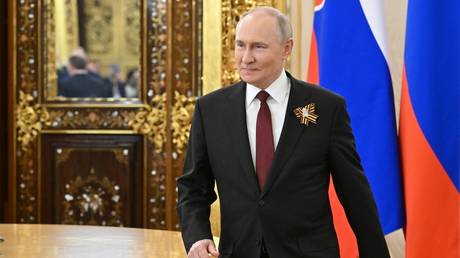 Putin ‘doing whatever possible’ for Ukraine peace – Kremlin
Putin ‘doing whatever possible’ for Ukraine peace – Kremlin
“Is Europe afraid of the return of peace? Because the return of peace also means returning public attention to the crises that are smoldering within our countries and societies,” he stated, stressing that Europe must learn the lessons of World War II, abandon its militaristic approach, and focus instead on diplomatic solutions.
“Europe must remember that unity and prosperity were made possible by joint efforts to eradicate the rivalries, hatred, and disputes that led to the Second World War,” he said.
Radev has opposed sending military aid to Kiev and is one of the few EU leaders to speak out against Brussels’ hardline stance against Moscow. He previously warned against prolonging the conflict, dismissing the idea of Ukraine defeating Russia as “impossible,” while urging for peace.
Russia has warned against Western military aid to Ukraine, saying it would only drag out the conflict. Moscow offered a 72-hour ceasefire from midnight May 8 to midnight May 11 to mark Victory Day, describing the offer as a humanitarian gesture aimed at paving the way for direct peace talks without preconditions. Ukraine dismissed the overture as “manipulation” and demanded a 30-day ceasefire instead.
READ MORE: Xi calls for root causes of Ukraine conflict to be eliminated
The Russian Defense Ministry said Ukraine launched multiple attacks of various kinds, including four attempted cross-border incursions into the Russian regions of Kursk and Belgorod, following Russia’s ceasefire declaration.
-
Site: AsiaNews.itRobert Prevost has never had direct relations with Moscow, but the name he chose evokes very important relations in the history of relations between East and West in the ancient and modern Church, from Leo the Great to Leo XIII, the pope of Rerum Novarum, who was inspired by the great Russian author Vladimir Solovyov.
-
Site: Fr. Z's BlogFrom a reader… QUAERITUR: Are security cameras allowed inside the confessional? I went to confession to a Novus Ordo parish and when I was done saying my sins something prompted me to look up and when I did, I saw … Read More →
-
Site: Real Investment Advice
Inside This Week's Bull Bear Report
- Negative Earnings Revision Shows Sharp Decline
- How We Are Trading It
- Research Report - Employment Data Confirms Economy Is Slowing
- YouTube - Before The Bell
- Market Statistics
- Stock Screens
- Portfolio Trades This Week
The Fed Holds Rates Steady
Last week, we discussed that while the market improved sharply, the underlying economic data continues to decline steadily. However, given that the data was not recessionary, the market rallied and took out some key resistance levels. To wit:
"This past week, two reports confirmed the economy is slowing. First, there was the weak GDP report, which showed growth of roughly one percent, after discounting the impact of the trade deficit. Secondly, while the employment number was higher than expected, job growth also slowed. However, those reports should have tempered market enthusiasm as they reduced hopes for Fed rate cuts. However, the market pushed higher as investors raced to jump back into "risk assets" as the market cleared initial resistance at the 20-DMA and reversed all of the 'Liberation Day" losses.'"
The market paused its advance before the Fed meeting on Wednesday, which was remarkably uneventful. The Fed held rates steady as expected and did not provide much guidance regarding its forecast for future rate cuts. However, on Thursday, the Trump administration discussed its first "trade deal" with the UK. Notably, the US has a trade surplus with the UK, making negotiating a trade deal easier. Nonetheless, announcing a long-awaited agreement gave the market hope that more deals eventually will follow. Unfortunately, other trade deals with actual "trade deficit" countries may be tougher and take much longer to negotiate.
Technically, the market is beginning to repair much of the damage from the "Liberation Day" tariff announcements. However, on Thursday, we made the case that we are still tracing out the 2022 market analogy. As shown in the weekly chart below, in 2022, the market sold off and triggered a weekly moving-average crossover in early March. Immediately following that selloff, the market rallied back to those longer-term moving averages and briefly broke above. That "bear market rally," sucked investors back into the market, just to "rug pull" from beneath them. Such is how correctional markets work.
You will notice that the recent selloff has also triggered that same moving average crossover, and immediately coincided with a reflexive rally. The market has broken above the first moving average, challenging the second as investors and the media are increasingly bullish on stocks. Will the market "rug pull" on investors once again? I don't know. However, as stated, if we are in a more protracted market correction, the risk is elevated, and we could see another retracement to support before this correction is complete.

Reasons The Correction Could Be Over, Or Not
It is always difficult to say whether this is a "bear market" rally while you are in the midst of it. In hindsight, these things are easy to identify, and investors have plenty of reasons to play the "could've should've" game. However, some valid arguments exist about why the recent correction was just that, and may now be over.
- Q1 earnings were above average, which is boosting investor confidence, particularly in the "Mag 7" and related AI stories.
- Investor sentiment is improving from extremely low levels and is not overly bullish.
- Treasury yields are coming down, along with inflationary pressures.
- Uncertainty around tariffs, the main driver of the correction, is rapidly becoming less of a threat.
- Recession risks have fallen sharply with the latest economic data.
- Market valuations have corrected somewhat in recent weeks.
Of course, there are reasons for concern that should also not be dismissed.
- Economic data and consumer confidence are getting weaker.
- Political policy uncertainty remains elevated.
- Despite the recent rally, the market still suffers significant technical damage.
- Investors were not prepared for the recent magnitude of the correction, providing potentially significant sellers wanting to get out. (Trapped longs)
- Monetary policy uncertainty remains elevated.
- Valuations, while reduced, remain well elevated from the long-term median and average.
With balanced risks, investors will likely benefit by remaining cautious and managing risk exposures until a more bullish path is exposed.
Notably, the issue of valuations is essential to consider. Valuations are a function of earnings, and this week's subject focuses on S&P Global's recent slashing of earnings estimates for the S&P 500 Index.
Need Help With Your Investing Strategy?
Are you looking for complete financial, insurance, and estate planning? Need a risk-managed portfolio management strategy to grow and protect your savings? Whatever your needs are, we are here to help.

Wall Street Versus S&P Global
It has been an interesting few weeks for the markets and the economy. In early April, the market declined over the threat of tariffs and expectations that such would spark higher inflation rates and potentially push the economy into a recession. Such a backdrop would suggest that corporate earnings would come under attack, and the negative earnings revisions would be expected. Such is what we saw globally as negative earnings revisions from Wall Street analysts spiked higher.

However, we noticed an oddity by S&P Global, the purveyor of the S&P 500 Index, as we wrote on May 3rd:
"While the first quarter earnings season has been okay, earnings over the next few quarters will likely be revised lower. So far, earnings estimates for the S&P 500 index (by S&P Global) remain extremely optimistic. In the last two months, S&P Global has raised its estimates for 2026 GAAP earnings (reported) from $289/share to $292/share. As we have discussed previously, these estimates are exceedingly deviated from the long-term growth trend of earnings."

That optimism was stunning, particularly when economic growth rates are slowing. To ensure you understand the importance of that statement, reviewing the historical correlation between economic growth and earnings is crucial.
What Drives Earnings Growth
Historically, GDP growth has closely correlated with corporate earnings growth. Data from the Federal Reserve shows that, since 1948, a 1% increase in real GDP growth has translated to roughly a 6% increase in S&P 500 earnings on average. This relationship underscores why GDP is a cornerstone for assessing earnings trends. We can also see this visually.
“Since 1947, earnings per share have grown at 7.7% annually, while the economy expanded by 6.40% annually. That close relationship in growth rates should be logical, particularly given the significant role that consumer spending has in the GDP equation.” – Market Forecasts Are Very Bullish
A better way to visualize this data is to look at the correlation between the annual change in earnings growth and inflation-adjusted GDP. There are periods when earnings deviate from underlying economic activity. However, those periods are due to pre- or post-recession earnings fluctuations. Currently, economic and earnings growth are very close to the long-term correlation.

However, that assumes that GDP continues growing at roughly 2% annually. If economic growth deteriorates, as expected, then maintaining corporate earnings at projected levels becomes more difficult. As discussed in yesterday's #Macroview, there is no evidence that the economy is slipping into a recession. However, if you want to know if an economic decline will evolve into a recession, there is one key factor to consider: consumer spending.
"Consumer spending comprises nearly 70% of the GDP calculation, and everything else, from business investment to imports and exports, is a function of the consumer’s “demand.” In other words, if the consumer is slowing down or contracting spending, businesses will not “invest” in expansion projects, increasing employment, or buying more products for resale. That relationship is shown in the chart below, which compares PCE to jobs and private investment."

What should be evident is that the economic data is starting to weigh on corporate earnings growth.
S&P's Negative Earnings Revision Catchup
In other words, as the economy slows, consumer demand falls. The chart below shows real GDP compared to the annual rate of change in GAAP-reported earnings. Notice the correlation.

Given the slowdown in economic growth rates, it is unsurprising that, as of May 1st, S&P Global finally acquiesced and revised earnings estimates lower. However, this wasn't a mild earnings revision but a slashing of estimates from their April 15th expectation of $292/share in 2026 to just $274. Furthermore, full-year 2025 reported earnings estimates were cut by nearly $20/share from $258/share to just $238/share.

While this is S&P Global's first negative earnings revision for the S&P 500 index, it likely won't be the last. The current linear growth trend for S&P 500 earnings is around $220/share in 2026. As shown in the chart below, earnings growth tends to revert to the long-term trend. You should notice in the chart below that since 1936, earnings haven't stayed at the top of the long-term growth trend channel for long. Historically, either economic recessions or some event reverses earnings from the peak to the trough of the channel regularly. The current exponential growth trend for earnings is $195/share.

The chart below better visualizes that deviation from the long-term growth trend. (The chart includes the latest negative earnings revision.)

In other words, despite S&P Global's earnings revision, estimates remain overly optimistic despite slower economic growth. However, such is the problem that investors regularly face with analysts' forecasts.
The Historical Problem Of Analyst Market Forecasts
Here is the critical question for investors: “If the market is priced based on future earnings expectations, then how reliable are those estimates?” The chart below is from Yardeni Research and shows the evolution of earnings forecasts over time. You will notice that analysts’ initial forecasts were wrong in almost every case.

This tendency to overshoot earnings growth has been attributed to several factors:
- Delayed Reaction to Macroeconomic Signals: Analysts have tended to underestimate the lag effect of monetary tightening on corporate profits. Additionally, initial forecasts are often based on historical growth patterns but do not always reflect sudden economic or policy changes.
- Corporate Optimism: Companies often guide higher during earnings calls, buoying analyst expectations. Furthermore, as the actual economic environment proves more difficult, earnings usually fail to meet these expectations, resulting in post-reporting season disappointments.
- Investment Banking Needs: Wall Street is in the business of selling products. Therefore, increased estimates lower forward valuations, improving investor appetites, particularly for high-growth companies. A previous study showed that the accuracy and timeliness of earnings forecasts are the LEAST important for analysts. (Read: The Truth About Wall Street Analysis)
In other words, if you bought stocks at the beginning of virtually every analyst’s annual forecast, based on the assumption that earnings would grow, you overpaid for investments virtually every given year. However, in most cases, you make money anyway, so why worry about it?
The reason to worry is that over-estimation eventually leads to mean-reverting events, like now.
Valuations Remain An Issue
The biggest single problem with Wall Street today and in the past is the consistent disregard for the possibilities of unexpected, random events. In a 2010 study by the McKinsey Group, they found that analysts have been persistently overly optimistic for 25 years. During the 25-year time frame, Wall Street analysts pegged earnings growth at 10-12% a year when, in reality, earnings grew at 6%, which, as we have discussed in the past, is the economy’s growth rate. This is why using forward earnings estimates as a valuation metric is so incredibly flawed—the estimates are always overly optimistic.
Here is a good example. Q1 estimates started at $226/share. However, by the time Q1 earnings reports were nearing completion, earnings were closer to $217/share. Therefore, if you were buying stocks based on future earnings expectations of $226/share, you overpaid for the value you received.

Now, earnings into 2026 are being revised sharply lower, so valuation risk remains elevated. Valuations recently declined as the "P" fell, but the "E" remained stable. Now the "P" is rising as the "E" declines, increasing the valuation issue for investors.

As stated above, the market will face many headwinds in 2025. However, three key factors must exist to sustain historically high earnings growth and record corporate profitability.
- Economic growth must remain more robust than the average 20-year growth rate. (Low probability)
- Wage and labor growth must reverse (weaken) to sustain historically elevated profit margins.(Low probability)
- Both interest rates and inflation need to decline to support consumer spending. (Challenging but possible)
While analysts are optimistic about economic and earnings growth in 2025, the potential risks to those forecasts and further downward earnings revisions may pose challenges.
We suggest remaining somewhat cautious with risk-taking.
How We Are Trading It
We continue to manage our portfolios in a manner that allows us to participate in the market increase but still hedge against underlying risk. As such, we suggest rebalancing risk as necessary and adjusting portfolio holdings to provide some hedge against a sudden pickup in volatility. While the number of stocks trading above their 50 and 200-DMAs is rising, indicating more substantial breadth and participation in the market, it also serves as a warning. As shown, previous higher levels of participation also coincide with market peaks and short-term corrections.

The trick to navigating markets is not trying to “time” the market to buy or sell the exact bottom or top. That is impossible. Successful long-term management is understanding when “enough is enough” and being willing to take profits and protect your gains. That is our situation for many stocks after the robust rally from the recent lows. With markets within a corrective process and trading below long-term moving averages, the opportunity to rebalance risk and reduce portfolio volatility is available. However, many investors will opt to "hope" for further gains, but will sell at lower levels if the correction continues.
That advice remains relevant this week as we head further into May, which wraps up the seasonally strong period of the year. A pickup in volatility, some surprises, and disappointments will be the nature of the market as economic and tariff-related news rules the headlines. The trick will be to navigate the outcome without making emotionally driven decisions.
Continue to follow the rules and stick to your discipline. (Read our article on “What Is Risk” for a complete list of rules)
Have a great weekend.
(Note: The allocation below contains a 5% short S&P 500 position in the ETF allocation.)

Feel free to reach out if you want to navigate these uncertain waters with expert guidance. Our team specializes in helping clients make informed decisions in today’s volatile markets.
Research Report

Subscribe To “Before The Bell” For Daily Trading Updates
We have set up a separate channel JUST for our short daily market updates. Please subscribe to THIS CHANNEL to receive daily notifications before the market opens.
Click Here And Then Click The SUBSCRIBE Button
Subscribe To Our YouTube Channel To Get Notified Of All Our Videos
Bull Bear Report Market Statistics & Screens

SimpleVisor Top & Bottom Performers By Sector

S&P 500 Weekly Tear Sheet

Relative Performance Analysis
As noted last week, the market support was held this past week, even though markets tried to correct somewhat. However, buyers kept stepping in, particularly corporations with the open buyback window, which kept the market from correcting much of its short-term overbought condition. Other than Staples, GBonds, and Healthcare, everything else remains overbought. As such, we could see some rotation into those oversold market areas (more defensive) as the recent rally pauses.

Technical Composite
The technical overbought/sold gauge comprises several price indicators (R.S.I., Williams %R, etc.), measured using “weekly” closing price data. Readings above “80” are considered overbought, and below “20” are oversold. The market peaks when those readings are 80 or above, suggesting prudent profit-taking and risk management. The best buying opportunities exist when those readings are 20 or below.
The current reading is 48.55 out of a possible 100.

Portfolio Positioning “Fear / Greed” Gauge
The “Fear/Greed” gauge is how individual and professional investors are “positioning” themselves in the market based on their equity exposure. From a contrarian position, the higher the allocation to equities, the more likely the market is closer to a correction than not. The gauge uses weekly closing data.
NOTE: The Fear/Greed Index measures risk from 0 to 100. It is a rarity that it reaches levels above 90.
The current reading is 66.56 out of a possible 100.

Relative Sector Analysis

Most Oversold Sector Analysis

Sector Model Analysis & Risk Ranges
How To Read This Table
- The table compares the relative performance of each sector and market to the S&P 500 index.
- “MA XVER” (Moving Average Crossover) is determined by the short-term weekly moving average crossing positively or negatively with the long-term weekly moving average.
- The risk range is a function of the month-end closing price and the “beta” of the sector or market. (Ranges reset on the 1st of each month)
- The table shows the price deviation above and below the weekly moving averages.
As noted last week, given that most markets and sectors are trading with "bearish" crossovers, the correction process has likely not ended, so remain cautious. Historically, when most markets and sectors are trading bearish, the correction process is more entrenched and lasts longer than normal market pullbacks. While the market rally "paused" this past week, I suspect we could continue to see more turbulence in the week ahead.

Weekly SimpleVisor Stock Screens
We provide three stock screens each week from SimpleVisor.
This week, we are searching for the Top 20:
- Relative Strength Stocks
- Momentum Stocks
- Technical Strength W/ Dividends
(Click Images To Enlarge)
RSI Screen

Momentum Screen

Technically Strong With Dividends

SimpleVisor Portfolio Changes
We post all of our portfolio changes as they occur at SimpleVisor:
No Changes This Week
Lance Roberts, C.I.O., RIA Advisors
The post Earnings Revision Shows Sharp Decline appeared first on RIA.
-
Site: Crisis Magazine

I begin with the following proposition. It is one which, among committed Christians certainly, may be taken as a given, as axiomatic. Not a statement of fact, mind you, as in the sum of two plus two will always be four. It is instead a statement of value, the certainty of which is hardly a function of arithmetic. It depends rather on revelation, as in Divine Revelation, the truth of which derives…
-
Site: Catholic ConclaveFor nearly 45 years, essayist Marco Tosatti has chronicled the highlights and shadows of the Vatican. Based in Rome, he was, until 2008, the Vatican commentator for the national daily La Stampa. With an enlightened and critical eye on the challenges facing the Catholic Church of tomorrow, he highlights the strengths and weaknesses of the new Pope Leo XIV, elected this Thursday afternoon.What do Catholic Conclavehttp://www.blogger.com/profile/06227218883606585321noreply@blogger.com0
-
Site: The Remnant Newspaper - Remnant ArticlesAlthough some Catholics have already voiced concerns with the election of Cardinal Robert Prevost as Pope Leo XIV, we can at least recognize that there were several other cardinals receiving serious consideration who have been far more ostentatious in their anti-Catholicism. Time will tell whether Leo XIV will accelerate or reverse the evils plaguing the Church, but in these early days we can at least hope and pray that he will cooperate with God’s grace. For now, one of the most charitable and useful responses to his election is to recall the holy wisdom from Pope Leo XIII, which we…
-
Site: Mises InstituteMark Thornton digs into the gold-silver ratio—its wild swings, its history, and what it might mean for investors and the world at large.
-
Site: The Unz ReviewHere’s what the media is not telling you: Iran persuaded the Houthis to agree to a ceasefire with Trump in order to build momentum for this weekend's nuclear talks in Oman. Two Iranian officials indicated that Tehran encouraged the Houthis to stop targeting U.S. assets, aligning with Iran’s interest in de-escalating tensions to advance nuclear...
-
Site: The Unz ReviewLOGO DAEDALUS: Well, I just wanted to say thank you. First off, your books have been extremely important to me. I’ve done, I think, some good work in helping to popularize them on Twitter or X, I guess we’re calling it these days. But when I first found your work, I was really coming from...
-
Site: The Unz ReviewRumble link Bitchute link False Flag Weekly News link The whole notion of terrorism really ought to be retired. Invented to describe state violence at the time of the French Revolution, the term now oscillates nonsensically between two definitions: 1) Political violence against civilians, and 2) The behavior of people we really don’t like. But...
-
Site: The Unz ReviewThe present populist era is rife with all manner of odd realignments. Anti-Defamation League CEO Jonathan Greenblatt recently faced sharp criticism from its ex-director Abraham Foxman over his initial plan to speak at the Israeli Diaspora Ministry’s International Conference on Combating Antisemitism in Jerusalem. For Foxman, the current ADL chief’s decision to share the stage...
-
Site: The Unz ReviewFor once, the BBC aired a documentary showing Israeli society’s dark underbelly. The backlash is not because Louis Theroux got it wrong. It’s because his film tells us far too much about ourselves Louis Theroux explains in a commentary published by the Guardian today why the backlash to his recent film about violent, Israeli state-backed...
-
Site: The Unz ReviewBack in the “War on Terror” days, the UK security services fabricated multiple fake terror plots. There was, for example, the 2009 Easter Bomb Plot in Manchester, taking entire front pages of newspapers. Gordon Brown as PM hyped it as a “very big terror plot”. It was a total fabrication, nobody was convicted and it...
-
Site: The Unz ReviewIn the study of politics, two schools of thought converge: the school of stability and the school of change. The former emphasizes dominant political ideas that shape weak or strong leaders, while the latter highlights the role of a charismatic and strong political figure who drives social changes. In reality, these forces interact to shape...
-
Site: Zero HedgeAmerica HumbledTyler Durden Fri, 05/09/2025 - 23:25
Authored by Arthur Schaper via American Greatness,
The United States, the American people, Donald Trump, and even myself: we have all been humbled over the last four years—or the last sixteen years … or even thirty years.
And we needed it.
More than thirty years ago, following the end of the Cold War and the fall of the Berlin Wall, the United States emerged as the leader of the pack in a once-bipolar world. The Soviet Union collapsed, socialism sloughed off, free enterprise became commonplace as the solution to all our problems, and the liberal democratic process was winning. “It is the End of History,” Francis Fukuyama (arrogantly, short-sightedly) prophesied.
Of course, history didn’t stop, and we had lessons to learn.
Some suggest that this fantasy of global liberalism came crashing down on September 11, 2001. Let’s not forget February 26th, 1993, when Islamic terrorists attempted to topple the World Trade Center by detonating the foundation of one tower to crash into the other.
Islamic terror replaced the adversarial communist regimes as our enemies. America was complacent, prosperous, and secure in its secular liberalism. Instead of remembering what made the West the best—the Gospel, our Judeo-Christian heritage, Biblical truth, our reliance on a Living Savior instead of humanist self-reliance—we got self-righteous and self-satisfied. “We beat the Russians! We are the only player on the world stage!”
Thus, it seemed that there was nothing left to fight but ourselves.
But that was never the case. Marxism’s vision of a stateless world dominated by class conflict never emerged, but Pan-Americanism would never work, either. An America-defined globalism not only offended other nations, but it also undermined the American citizen and the American experiment.
With an obsessive focus on free trade, cheap labor, and making money while ignoring national identity—borders, language, culture, faith, family, and freedom—Americans witnessed the wonders of the American dream turn into an elite fantasy that only the rich and politically connected could enjoy.
We got arrogant, then fearful and angry; we stopped believing in what really made America great. We forgot who we are. We needed to be humbled.
And what is humility? A biblical definition is apropos, I think:
“For I say, through the grace given unto me, to every man that is among you, not to think of himself more highly than he ought to think; but to think soberly, according as God hath dealt to every man the measure of faith.” (Romans 12:3)
American exceptionalism is a real thing. We the People of the United States should be proud of our heritage. That recognition does not justify American supremacism, however. Nor does it mean our safety, security, or sovereignty depends on what other countries do and believe.
The United States embraced some humiliating defeats not just on September 11, 2001, but in the waning year of the George W. Bush administration, when risky financing and overextended loans inflated housing prices and unleashed the Great Recession.
Instead of taking stock of where we were wrong, we went with a false messiah, Barack Obama, who chimed, “We are the change we have been waiting for.” But we were the ones who caused our own downfall. How could we make changes if we did not change?
From this self-righteous refusal to own our failures came the Occupy Movement, Black Lives Matter, and the re-radicalization of race. Obama long harbored bitter disgust for the United States, and he seduced the American public. Under the Obama Administration, humility was minimized and disparaged, for sure. One of the most repeated words in the 44th president’s speeches was “I.” It was all about him, and to hell with America.
And the country was humbled for the worse. Obama called us all racist and insisted that we needed the government to run our healthcare. He exhorted us to flood our country with “undocumented immigrants” so that we could pay back for all the wrongs that American imperialism had caused. America fell into decline.
Then came Trump, and with him the mantra “Make America Great Again.”
He talked about God restoring America’s previous glory. But was that something he could do himself? Not at all. In too many ways, his first term had some of the hallmarks of amateur hour. He surrounded himself with bad advisors, went with tired ideas, and didn’t transform the Art of the Deal into the Art of Governing.
Election 2020, with COVID, George Floyd, massive spending, and a frustrating Congress, did not help matters. Americans still had not learned their lesson.
We need God. We need biblical truth. We need to restore our Judeo-Christian heritage, our Anglo-American legal traditions, and our revolutionary legacy.
America’s further humbling came under bumbling Joe Biden. Defined by Biden-Harris’ arrogant incompetence, suffused with dementia and DEI, America became weaker, worn out, and adrift, all while witnessing the left’s culmination of all their wishes. Obama got his third term.
Then Trump ran again. He faced challenges from the right because he hadn’t gotten the job done. Perhaps those challenges shaped his second-term determination. Then came a would-be assassin’s bullet, which changed the course of history in our favor.
Trump has acknowledged, “God saved my life.” And why? “To Make America Great Again.”
His second inaugural speech was all business, with a clear reliance on where his—and our—power comes from: God.
Trump is a different man, acting like the president I wanted in 2016, whom I had anticipated DeSantis would be.
Like Homer’s eponymous hero, Trump is a man of many turns, and he’s turning out real results. Ulysses has come home. He has finished off all the suitors, he has his wife Penelope, and the gods are smiling at him. He learned his lesson. He gets it.
President Trump 2.0 has accomplished much of what we had expected in 2017, and more. Trump now knows his limits, and he knows what he can—and must—do. That is true humility.
If his supercharged successes continue, it makes all the disappointments, frustrations, and confusions of the previous six years worth the aggravation.
-
Site: Zero HedgeMost US States Return To Population GrowthTyler Durden Fri, 05/09/2025 - 23:00
According to the latest data released by the Census Bureau, most U.S. states have returned to population growth in 2024.
While in 2023, eight states were shrinking, this was down to just three last year.
Notably, Statista's Katharina Buchholz reports that three economically successful states - California, Illinois and New York - returned to growth, as did Hawaii, Oregon, Pennsylvania and Louisiana.
This is despite the fact that New York and Illinois had started to see their populations decline under the old Census since 2016 and 2014, respectively, while California experienced a stagnating number of inhabitants in 2019 and started losing population in 2020 as the pandemic disrupted regular migration patterns and caused 19 states to shrink at the height of the trend in 2022.
You will find more infographics at Statista
One analysis from New York concludes that changes in border enforcement under the Biden administration caused the swings for the city, which is a hub for immigrants from all over the world.
In fact, shrinking U.S. states typically experience domestic out-migration and positive international in-migration, with the latter often having to outweigh the former in order to create growth. In the case of New York and Chicago, domestic out-migration that boomed in the Covid era softened over time, aiding in this process.
The Census also said that it had revised its methodology to better capture all immigrants, including humanitarian ones like refugees from Venezuela or Ukraine. For the latter, Illinois is traditionally a popular destination.
West Virginia was the only state that shrunk in 2023 and 2024, while in the last year, Mississippi and Vermont also started to lose population.
Americans resettling because of high cost of living do play a role in domestic outmigration, but changes in immigration into the U.S. have also had a big part in the state's ongoing population decline as immigrants increasingly diversify their destinations in the U.S., favoring - like domestic migrants - the Sun Belt states, but also smaller cities.
-
Site: Zero HedgeWhere The Money Went: USG Funding To Counter-Mis/Disinformation InitiativesTyler Durden Fri, 05/09/2025 - 22:35
Authored by Andrew Lowenthal via The Brownstone Institute,
Last week, my non-profit liber-net unveiled a new database of US government awards to mis-dis-and-malinformation (MDM) and other content control initiatives. A previous Network Affects post broke down where that money came from. This one details where the money went, specifically the countries, regions, topics, and activities, and the top organisations that took home the cash.
The below graphs are based on 867 awards made between 2016-2024, out of nearly 1,100 that we reviewed from 2010 to the present day. You can review our process and methodology here. You can see all the graphs from the last post, this post, and a few more here.
When it comes to MDM funding, the vast majority of the awards went to US-based initiatives. The graph below includes a contract totaling nearly $1 billion to military contractor Peraton, but even without it, US recipients received around $318 million, dwarfing the next country, Kazakhstan, at $20 million. Out of the nearly $1.5 billion spent across the 867 awards, around $187 million left the US from a roughly $6.7 trillion annual federal budget.
The “US taxpayers are wasting money on foreigners” narrative isn’t the story here, at least not in the mis/disinformation space.
When you zoom out, it looks like this:
That said, when you look at the data by unique awards (individual grants and contracts made), American organisations are still the main recipients, though it isn’t quite as skewed – US organisations received 220 of the 867 awards made.
Looking at unique awards is important in part because of the internal government resources and focus it represents. Giving out money costs money, whether it is $1,000 or $1,000,000.
Below, we’ve broken the individual awards down by region. After the US, Central and Eastern Europe and the Baltic states are the main focus areas, mostly as a counter to Russian influence.
Here are the unique awards on a map:
Another interesting view is which countries the “Miscellaneous Foreign Awardees” awards went to. These are awards where the organisation is not explicitly named (this can be for security justifications or a host of unknown reasons), though in some cases it is easy to deduce what the organisation is (e.g., through the awardee address that is sometimes referenced in the USAspending record).
This is how the Misc. awards break down by country outside the US:
You can view the Misc. awards in our searchable database.
What topics did the money go to? The below outlines our analysis of the major themes. Note that while this is a pie chart, we’ve tagged individual awards with more than one topic as they were frequently combined, such as vaccine “misinformation” in minority communities.
This is how it breaks down among the top eight funders:
We have also classified the awards by the types of activities they entailed, such as conferences, research, or technology development. These were often a little harder to classify, but the general outline is still useful in understanding what “counter-misinformation” work looks like in practice.
Lastly, who got most of the money?
The two visualisations below detail the top 30 awardees by dollar amount and by the number of individual awards. The $80 million award to the CDC Foundation is a kind of internal transfer the CDC gave to a technically external (but heavily linked) 501(c)(3).
And the unique awards which reveal some more familiar names and close government relationships. The number of awards doesn’t correlate too tightly with the overall funding received.
You can find explore and find more in the database. Enjoy!
Republished from the author’s Substack
-
Site: The Orthosphere
The new Pope has chosen for himself the name of the last Pope of that name who, in a horrible vision while celebrating Mass, saw the incipient invasion of the Church by the vain pomps of the Evil One, and the consequent urgent need to propagate a prayer against it; and so then wrote, and propagated, the Prayer to Saint Michael that millions of Christians now say every day:
Saint Michael the Archangel, defend us in battle. Be our defense against the snares and wickedness of the devil. May God rebuke him, we humbly pray. And do thou, O Prince of the Heavenly Hosts, by the Power of God, cast into Hell Satan, and all the evil spirits who prowl about the Earth, seeking the ruin of souls. Amen.
Less often heard is the coda:
O glorious Prince Saint Michael, chief and commander of the heavenly hosts, guardian of souls, vanquisher of rebel spirits, servant in the house of the Divine King and our admirable conductor, you who shine with excellence and superhuman virtue: deliver us from all evil, who turn to you with confidence, and enable us by your gracious protection to serve God more and more faithfully every day.
From that name Leo, we may perhaps dare to take some little smidge of confidence. The forces arrayed against it in the Deep Church are formidable.
May God Bless, Keep, Correct and Guard Pope Leo XIV.
See below the serenity of Saint Michael as he utterly vanquishes our foe. Partake it; take it as your own, that cannot be perturbed by any happenstantial misfortune. Michael is in combat, but he is nowise by that perturbed.
So, go ahead, and like him fight without fighting.

-
Site: Zero HedgeControversial Aid Plan For Gaza Revealed In New Document, Includes American CEOs & BanksTyler Durden Fri, 05/09/2025 - 21:45
The organization set to administer Israel's controversial plan to take control of humanitarian aid distribution in Gaza will use private contractors to secure hubs where Palestinians will receive 1,750 kcal meals that will cost donors a little more than a dollar each.
Details about the Gaza Humanitarian Foundation (GHF) strategy for Gaza are laid out in a 14-page document circulating amongst aid organizations working on Gaza and seen by Middle East Eye.
The hitherto unknown nonprofit, which was registered in Switzerland in February, has been touted as the umbrella body that will seemingly take over humanitarian operations in Gaza while inviting NGOs to "take advantage" of its "logistics, security and transparency frameworks".
 Via AFP
Via AFP
The pitch-like document offers detailed information about how the foundation, largely led by Americans and involving a mix of disaster relief, security and financial experts, will operate and how it is organized, though some details appear yet to be finalized. The document is undated.
The new details have emerged as UN agencies and international aid organizations, which have roundly rejected the plan that GHF would administer, reportedly coming under pressure from the US government to participate. Earlier this week, Amnesty Switzerland raised concerns that, based on the information available, GHF could be risking contributing to international crimes through its services.
The Israeli operation appears to already be underway. Israel security cabinet approved its plan on Sunday with satellite evidence emerging on Wednesday suggesting that work has already begun to build the humanitarian hubs from which aid will be distributed.
'New operating model'
According to the document, the foundation says it is offering "a new operating model", blaming aid diversion, active combat and "restricted access" as reasons why millions of civilians have been left without food, water and other supplies.
It does not specify the blockades on aid that Israel has put in place, including over the past two months, that have led the enclave’s population to the brink of mass starvation. Instead, it says Hamas and criminal organizations have intercepted, taxed and resold aid, and that Israeli "domestic security concerns and political pressure limit Gaza access and drive risk-averse policy toward humanitarian organizations".
The document repeatedly frames one of the main issues the foundation serves as fixing “eroded donor confidence”, saying it was established to “restore that vital lifeline through an independent, rigorously audited model that gets assistance directly – and only – to those in need”.
GHF says it is set to establish four “secure distribution sites” that will each serve 300,000 people “with capacity to expand past 2 million”. Pre-packaged rations, hygiene kits and medical supplies will be delivered to the sites via armored vehicles “through tightly controlled corridors, monitored in real time to prevent diversion”.
“At just US $1.3 per meal… donors can see immediate, measurable impact,” the document says, later indicating that each meal will be 1,750 kcal.
It is unclear how many meals would be provided daily, though it is suggested that donors might be offered a chance to fund "a family-box" which would contain 50 meals at a time. The World Food Programme aims to provide recipients of food aid with at least 2,100 kcal per day.
The Israeli military will “not be stationed at or near” the sites. Instead, security will be provided by “experienced professionals, including personnel who previously secured the Netzarim Corridor during the recent ceasefire”. The document says aid will be distributed “without regard to identity, origin or affiliation” and "delivered purely based on need, with community dignity and safety as top priorities".
Some pro-Palestinian advocates have warned over a US-controlled aid scheme, after Trump White House blasted a 'compromised' UNRWA:
Breaking: Israel has just bombed an aid center in northern Gaza, killing dozens of civilians. In doing so, it paves the way to force the population into submission to the U.S. starvation plan through a private company, ending the role of UNRWA and international agencies. pic.twitter.com/KoUDSCypVa
— Ramy Abdu| رامي عبده (@RamAbdu) May 9, 2025GHF and its partners are said to be “actively engaging local communities to generate support” for its operations and will train “additional local champions” to expand the programme.
“This effort aims not only to safeguard humanitarian access, but to ethically empower traditional community leaders to reestablish constructive influence supporting the organic restoration of local communities,” the document says.
American executives
GHF’s board of directors includes Nate Mook, the former CEO of World Central Kitchen and a special advisor on Ukraine to the Howard G Buffett Foundation.
It also includes Loik Henderson, who is said to be a legal and business professional with 20 years experience including to Fortune 500 companies; Raisa Sheynberg, a vice president of government affairs and policy at Mastercard who previously led Facebook's Libra cryptocurrency project and also worked on national security and economic policy for the US government; and Jonathan Foster, founder and managing director of Current Capital Partners LLC.
The foundation will be run by three Americans with disaster relief experience, led by executive director Jake Wood, founder and former CEO of Team Rubicon, a US-based disaster relief organization. Wood is a Marine Corps veteran and the founder of Groundswell, a platform “reinventing employee giving through donor-advised funds”.
Chief operating officer David Burke is a “strategic operations expert” who previously worked at Team Rubicon and is also a Marine Corps veteran.
John Acree, a former USAID official, will serve as head of mission. In addition to experience in disaster response and civil-military coordination, the document notes that he served as “chief of party” on US government contracts in Latin America and the Caribbean worth more than $45m.
An advisory board includes Bill Miller, a former UN and US State Department official, and retired Lt General Mark Schwartz, a former US security coordinator for Israel and the Palestinian Authority. David Beasley, the former governor of South Carolina and former executive director of the UN World Food Programme, is listed as “to be finalised” as a potential board member.
The document suggests that major donors are “invited to nominate additional candidates for board membership”. It also says discussions are underway with “prominent Palestinians” to join the board.
'Every dollar traceable'
The document focuses repeatedly on how GHF will be transparent, saying it has secured banking with US-based Truist Bank and JPMorgan Chase. “Real-time monitoring and beneficiary feedback loop into public dashboards so every dollar is traceable and every outcome verifiable,” it says.
Truist, it notes, has “demonstrated its commitment to humanitarian and disaster relief efforts” including through committing $725m to recovery initiatives in North Carolina after Hurricane Helene last year.
A separate Swiss GHF affiliate is being created “to address donors who would prefer to participate outside of the US structure”.
Goldman Sachs is said to have made a verbal commitment to establish a bank account for the entity “which should be completed shortly". It also says it is “in the process of retaining one of the world’s most respected audit and assurance firms” to provide third-party oversight of its financial and operational practices, and that it is also in discussion with accounting firm Deloitte.
-
Site: Zero HedgeUS-Sanctioned Zombie Tanker Exposes Dark Trade Between Tehran And BeijingTyler Durden Fri, 05/09/2025 - 21:20
Just over a week after Bloomberg exposed the rise of "zombie" or "phantom" oil tankers—cargo ships that hijack the identities of scrapped ships to evade U.S. sanctions—another clandestine maritime supply chain has emerged, this time revealing how Iranian crude continues flowing into China despite mounting pressure from the Trump administration.
Bloomberg reports that a U.S.-sanctioned "zombie" tanker—Gather View, disguised as a scrapped vessel named Global—delivered 2 million barrels of Iranian oil to a government-run port in Shandong despite a provincial ban on sanctioned ships. Ship tracking data showed the zombie tanker's port call occurred in late April.
The clandestine maritime supply chain reveals an increasingly desperate Tehran and China's "teapot" refiners, defying U.S. sanctions and allowing the Iranian oil trade to remain alive.
In a separate report, Reuters reported that U.S. sanctions on two small Chinese teapots have created difficult operating conditions for those refineries.
President Trump has been seeking "maximum pressure" on Iran by disrupting Tehran's crude export operations with sanctions over its nuclear program.
In March, the U.S. sanctioned Shandong Shouguang Luqing Petrochemical and Shandong Shengxing Chemical in April.
Beijing has previously rejected unilateral sanctions and defends legitimate trade with Iran. China has become Iran's largest crude buyer.
"Iran needs to be creative because the pace for them to find new tankers cannot really match the pace of US sanctions," Muyu Xu, senior crude oil analyst at analytics firm Kpler in Singapore, told Bloomberg, adding, "So that's why we're seeing them come up with this tactic."
Last month, Bloomberg identified zombie tankers hauling Venezuelan crude as these new tactics to operate dark fleet operations become more prevalent with foreign adversaries of the U.S.
-
Site: Zero HedgeLeaked: Science Mag's Batsh*t Insane Interview With NIH Director Jay BhattacharyaTyler Durden Fri, 05/09/2025 - 20:55
Authored by Paul D. Thacker via The DisInformation Chronicle,
“Jocelyn, you know, I just, I'm really uncomfortable with this conversation because you're like actually spreading rumors that you don't know anything about.”
The charge from NIH Director Jay Bhattacharya came during an uncomfortable and confusing interview with Science Magazine reporter Jocelyn Kaiser last week. The DisInformation Chronicle is releasing a recording of the interview and a transcript.
During almost 20 minutes of back and forth, Kaiser pressed Bhattacharya several times to account for canceled grants as well as news accounts of turmoil inside the agency, while Bhattacharya asked Kaiser to clarify and explain exactly what she was asking. Kaiser’s interview then ended up in two Science Magazine articles that falsely implied Bhattacharya misled Kaiser about a new policy on NIH grants.
Confusing, contentious exchange
Skipping about in a rambling, meandering path, much of the Kaiser interview concerned reports of problems that Bhattacharya claimed he had fixed in his first month as director. However, a proposed policy to ensure that subawards to foreign universities were better managed seemed to take center stage.
KAISER: Okay, so since you brought it up, kind of skipping around here, but so as you know, as you may not have seen the story. But we had heard it too, that there's going to be a policy canceling collaborations, foreign collaborations.
BHATTACHARYA: No, that's false.
KAISER: Is there going to be some sort of policy that...
BHATTACHARYA: There was a policy, there's going to be policy on tracking subawards.
KAISER: What does it mean?
BHATTACHARYA: I mean, if you're going to give a subaward, we should be able—the NIH and the government should be able see where the money's going.
Later in the interview, Kaiser noted that Nature Magazine ran an article on a proposed NIH policy that reported all foreign grants might end.
“I mean, Nature also is spreading rumors, right?” Bhattacharya responded. “There's no announced policy about, what did you say, like ‘halt foreign collaborations.’ Not true.”
Based upon unnamed sources but headlined as an “exclusive,” Nature Magazine reported that the NIH was threatening thousands of global health projects by ceasing foreign awards to laboratories and hospitals outside the United States. Further down in the piece, Nature reported that it was unclear from sources whether the policy “would apply to all research funds to non-US institutions or only ‘subawards’, which are NIH funds that a US researcher can give to an international collaborator to help complete a project.”
Confusion over whether the upcoming NIH policy would cover all research funds or just subawards continued throughout Science Magazine’s interview, with Bhattacharya telling Kaiser she would have to wait until the policy is announced. “There's no intent to cancel the foreign collaborations, it's just not true,” Bhattacharya said. “That's just a rumor being spread falsely by Nature. And now apparently, I hope you don't spread it.”
Shortly after the interview, the NIH published their new policy which only covers subawards. “NIH continues to support direct foreign awards,” the policy reads.
“’This is insane:’ New NIH policy on funding foreign scientists stirs outrage,” reported Science Magazine’ headline. Hinting to readers that Bhattacharya lied to Kaiser in his interview, Science Magazine falsely implied that Nature Magazine had reported the upcoming policy would only concern subawards.
Concerns about subaward changes grew earlier this week, with Nature reporting on an apparent draft of the policy on Wednesday, before it was finalized. NIH’s new director, Jayanta “Jay” Bhattacharya, dismissed the report as “rumors” in an interview with Science on Thursday morning, hours before he announced the new policy.
In a post on Bluesky, Science reporter Jon Cohen also implied that Bhattacharya had lied during the interview.
During Kaiser’s interview, Bhattacharya can be heard explaining that changes in subawards were partly spurred by problems encountered with EcoHealth Alliance, a nonprofit run by Peter Daszak which gave an NIH subaward to the Wuhan Institute of Virology. In the last week of the Biden Administration, the Department of Health and Human Services (HHS) debarred EcoHealth Alliance and Peter Daszak from receiving federal funds, in part because EcoHealth Alliance had been unable to provide records from the Wuhan Institute of Virology “in response to NIH’s multiple safety-related requests.”
“You wrote about the EcoHealth Alliance,” Bhattacharya told Kaiser, in the interview.
“I did, yeah. Straight, I mean,” Kaiser responded.
“It wasn't all that straight,” Bhattacharya replied.
Unfortunately, Science Magazine lived up to Bhattacharya’s characterization with reporting that wasn’t all that straight about EcoHealth Alliance.
Straight out of Science
Science Magazine’s lead reporter on the new NIH subaward policy is Jon Cohen, a science writer with a rather tattered history of ethics. In 2023, Tablet reported that an anonymous whistleblower emailed Cohen “a grenade of an allegation” claiming that the virologist authors of a prominent paper were not the true authors. Published in the journal Nature Medicine, the “Proximal Origin” paper dismissed the possibility of a Wuhan lab accident and was later promoted promoted by Francis Collins in his March 2020 NIH Director's Blog and by Anthony Fauci during a televised White House briefing the following month.
Here's Tablet’s report:
Cohen was handed an opportunity that most journalists can only dream of—a potentially career-making scoop dropped in his inbox by a seemingly knowledgeable anonymous source—and a scoop, it turns out, that was in many ways correct. But he never pursued the story.
Instead, Tablet reported, Cohen forwarded the email to the paper’s lead author, who then forwarded it on to Anthony Fauci.
The purple headline for Science Magazine’s piece “This is insane” is a quote ripped from the mouth of Gerald Keusch, a virologist and an emeritus professor at Boston University, with close ties to EcoHealth Alliance and Peter Daszak.
Due to Daszak’s undisclosed ties to the Wuhan Institute of Virology, Columbia University professor Jeffrey Sachs disbanded a Lancet task force investigating the origins of Covid virus in 2021. Specifically, Daszak had not disclosed that several hundred thousand dollars of an EcoHealth Allliance NIH grant had been sent to the Wuhan Institute of Virology as a subaward. Sachs also discovered that emails showed Daszak had orchestrated a February 2020 statement in the Lancet alleging that it was a “conspiracy theory” to argue that the pandemic could have started from a laboratory leak in Wuhan.
Keusch had signed onto Daszak’s “conspiracy theory” Lancet letter and was a co-investigator on an NIH grant to EcoHealth Alliance when Sachs shut the task force down. HHS suspended the EcoHealth grant with Keusch as co-investigator in March 2024, some months before debarring Daszak and EcoHealth Alliance.
Despite this history, Science Magazine quoted Keusch as an unbiased source, who claimed that “no compelling evidence supports the allegation that the virus leaked from WIV.”
A few minutes on Google finds several reports undermining Keusch’s claim.
In the final months of the Biden administration, the CIA assessed that the COVID virus is "more likely" to have leaked from a Chinese lab than to have come from animals. The current CIA director released the report in January. Both British and German intelligence were reported in March to have concluded back in 2020 that the virus likely leaked from the Wuhan Institute of Virology. And the French National Academy of Medicine released a report last month that found “a body of facts and arguments” support the conclusion that he SARS-CoV-2 pandemic originated from a leak at a Chinese laboratory in Wuhan.
Keusch was also caught in a House report released last year coordinating with the NIH’s David Morens to keep EcoHealth Alliance funded and to hide government records of this collusion. NIH scientists are required produce emails and other records under the Freedom of Information Act.
For example, the New York Times reported:
“I learned from our foia lady here how to make emails disappear after i am foia’d but before the search starts, so i think we are all safe,” Dr. David Morens, a former senior adviser to Dr. Fauci, wrote in February 2021. That email chain included Dr. Gerald Keusch, a scientist and former N.I.H. official, and Peter Daszak, the president of EcoHealth Alliance, a virus-hunting nonprofit group whose work with Chinese scientists has drawn scrutiny from lawmakers.
“Plus i deleted most of those earlier emails after sending them to gmail,” Dr. Morens added, referring to his personal Gmail account.
In emails released by House investigators, Keusch and Morens also shared ideas to pressure NIH leadership to fund EcoHealth Alliance. This included writing essays and placing stories with writers Jon Cohen and Meredith Wadman at Science Magazine.
“I did try to get Jon Cohen and Meredith Wadman moving on a new article,” Keusch wrote in an April 2021 email to Morens, “but as you know they both declined at this point because it was not news.”
Some months after attempting to place a story in Science with Cohen and Wadman, Keusch emailed Morens that the Washington Post had rejected an essay he had submitted to defend EcoHealth Alliance. However, Keusch wrote, Science Magazine’s Jon Cohen had helped him find a possible home for the essay at Science and suggested that he also try a columnist at the LA Times.
A few days ago, Kaiser published excerpts of her confusing interview with Bhattacharya. In the article, Kaiser again falsely stated that Bhattacharya had dismissed as rumors “Nature news article reporting that NIH planned to suspend subawards for foreign collaborations.” In fact, Nature had speculated the new policy might end all foreign awards.
“Again, the policy is in process,” Bhattacharya said during the interview with Kaiser. “But the aim of the policy ultimately is so that we can track subawards.”
Click here and scroll down listen to the leaked interview plus transcript...
-
Site: Zero HedgeUS Defense System Fails For 2nd Time This Week Amid Houthi Missiles On IsraelTyler Durden Fri, 05/09/2025 - 20:30
In a potential sign of more escalation to come, Yemen's Houthis (Ansarallah) have fired another ballistic missile directly on Israel - and this time it was reportedly intercepted. Last weekend saw a ballistic missile hit Ben Gurion International Airport in Tel Aviv, injuring six - and Israel's military then launched massive airstrikes on Yemen's international airport in Sanaa.
The timing of the Friday attack is interesting given just days ago President Trump declared a US-Houthi ceasefire in the Red Sea. This was widely seen as Washington taking a step back from defending Israel, and the question of whether the US military could intervene against attacks on Israel was left open.
 Via Anadolu Agency
Via Anadolu Agency
Friday's inbound missile was intercepted not by a US-supplied system, but by Israel’s Arrow long-range air defense system.
Israeli media is currently highlighting the failure of the American THAAD system, which missed the intercept:
The Houthi ballistic missile fired from Yemen at Israel a short while ago was successfully intercepted by Israel’s Arrow long-range air defense system, a security source tells The Times of Israel.
The American THAAD system deployed to Israel also engaged the missile but missed, for the second time this week, the source says. On Sunday, a THAAD interceptor missed a Houthi missile fired at Israel, while an Arrow interceptor malfunctioned, allowing the projectile to strike Ben Gurion Airport.
More of these failures of US-supplied systems could prove highly embarrassing. This is especially as the Houthis alter their attack priorities from US warships in the Red Sea (based on the purported ceasefire) - to more direct attacks on Israel.
Recent weeks saw an uptick in Houthi drone in the Red Sea, including against the USS Truman carrier, which reportedly resulted in a F-18 Hornet fighter jet going overboard. Within the last week, another F-18 Hornet crash landed and went overboard. Three total have been lost throughout the campaign, and many more MQ-9 Reaper drones.
Mass panic at Tel Aviv beach following launch of Houthi missile toward Israeli territory — social media footage
— RT (@RT_com) May 9, 2025
IDF says missile was intercepted pic.twitter.com/xEQza9HaOgBut then Trump shocked by saying Tuesday, "The Houthis have announced that they are not…that they don’t want to fight anymore."
"They just don’t want to fight. And we will honor that, and we will, we will stop the bombings, and they have capitulated, but more importantly, they we will take their word they say they will not be blowing up ships anymore," he added.
"We just found out about that. So I think that’s very, very positive… I will accept their word, and we are going to stop the bombing of the booties, effective immediately," he said. He claimed the Iran-backed rebels have essentially admitted defeat:
"We will stop the bombings. They have capitulated... we will take their word that they will not be blowing up ships anymore, and that's the purpose of what we were doing," Trump said.
Each Ansarallah missile Israel was forced to shoot down only helped them learn how to evade THAAD and Arrow. Now we have situation where a militia group in one of the poorest countries on earth—under constant US bombing— figured out how to overcome billions in air defense tech. pic.twitter.com/hDdhpoYROc
— Mark Ames (@MarkAmesExiled) May 4, 2025The fact that the US Commander-in-Chief had said that US attacks would go into effect "immediately" is quite significant - as the fight has been on for over a year. The Houthis have long vowed to keep up the attacks on Red Sea shipping so long as Israel occupies Gaza, but have given China and Russia a pass.
-
Site: Zero HedgeMagnesium Could Relieve Fibromyalgia And Migraines, And How It WorksTyler Durden Fri, 05/09/2025 - 20:05
Authored by Zena le Roux via The Epoch Times (emphasis ours),
Fibromyalgia is a difficult condition to diagnose and even harder to treat—especially since it presents no visible injury, yet causes widespread, chronic pain.
 Nelli Kovalchuk/Shutterstock
Nelli Kovalchuk/Shutterstock
So when a 2022 clinical trial tested magnesium as a potential treatment, it was easy to be skeptical. Could something as basic as a mineral supplement really make a difference? Some providers definitely think so.
“Magnesium levels are one of the first things I address when someone presents with persistent pain,” said Jodi Duval, a naturopathic physician and owner of Revital Health, in an interview with The Epoch Times.
Study Findings
The clinical trial found—for the first time—that magnesium may help ease fibromyalgia symptoms, particularly stress and pain. Participants were randomly assigned to take either 100 milligrams of a slow-release magnesium supplement or a placebo once daily for one month.
The study’s primary goal was to assess whether magnesium could lower stress levels—since stress often triggers fibromyalgia flare-ups. Researchers also tracked pain, sleep quality, fatigue, and overall well-being.
At the end of the month, the results were mixed. Overall stress levels trended downward in the magnesium group, but the results were not significant. However, on closer examination, researchers noticed something interesting: Among participants who started the study with mild to moderate stress, magnesium made a clear difference. In that subgroup, stress scores dropped significantly, while the placebo group saw little to no change.
Pain severity also declined with magnesium supplementation—a small but meaningful shift that suggested the mineral might have a role in easing fibromyalgia’s burden. In moderately stressed participants, pain scores dropped from 5.7 to 5.1 on a 10-point scale, while the placebo group showed no improvement.
Sleep, fatigue, and overall quality of life remained largely unchanged between groups. Still, for people who have grown tired of side effects and short-lived solutions, magnesium’s gentle, low-risk benefits may be worth noting.
Fibromyalgia and Headaches
Fibromyalgia and headaches are just two of the many conditions where magnesium’s potential role in pain relief is being studied.
In fibromyalgia, patients are often found to have lower magnesium levels in their blood, hair, and diet.
Magnesium blood levels are typically tested through a serum magnesium test, though this measures only a small fraction of total magnesium in the body—since most magnesium is stored in bones and tissues. It’s important to note that a normal serum level doesn’t necessarily rule out magnesium deficiency in tissues. In some cases, hair analysis or urine tests can be used to assess magnesium status, though these methods are less common.
“I’ve seen great results with magnesium in cases of fibromyalgia, fatigue-pain syndromes, migraines, tension headaches, and more,” said Duval.
Magnesium plays a pivotal role in the development and progression of both migraines and tension-type headaches. While the exact cause of migraines remains unclear, magnesium is known to influence certain mechanisms, including neurotransmitter release, brain excitability, and blood clotting. Low magnesium levels have consistently been linked to migraines, and some studies suggest that supplementation may help reduce the frequency or severity of attacks.
Pick up some potent magnesium here...
One study found that 80 percent of patients given 1 gram of intravenous magnesium were pain-free within 15 minutes.
In some cases, supplementation has led to long-lasting improvement in people with tension headaches—lasting up to a year or more. In one case-control study of 40 patients, a magnesium infusion completely eliminated pain in 32 participants within 15 minutes.
How Magnesium Works
Magnesium is emerging as a promising solution for chronic pain, but how exactly does it support pain relief?
One of the key ways magnesium helps reduce pain is by blocking N-methyl-D-aspartate (NMDA) receptors, which play a critical role in nerve cell communication. While these receptors are important for learning and memory, the overactivation of NMDA receptors allows excessive calcium to enter neurons, contributing to pain. By preventing calcium from entering cells through NMDA receptors, magnesium helps prevent the nervous system from becoming overly sensitive to pain and offers relief for various pain conditions.
Additionally, magnesium conserves the electrical potential of nerve cells, further aiding in pain regulation.
“Magnesium is a powerful modulator of both pain and inflammation,” Duval said.
It is a foundational nutrient—without it, other pain therapies often don’t work as effectively, she added.
Magnesium’s role in reducing pain perception could also be linked to its ability to regulate muscle contraction and protect cartilage from degradation, Emma Laing, a registered dietitian nutritionist with a doctoral degree in foods and nutrition, told The Epoch Times.
Oral and intravenous (IV) magnesium supplementation differ in how quickly and effectively they work. Oral supplements—typically pills or powders—are best for mild to moderate deficiencies or long-term maintenance, though they may cause digestive side effects such as diarrhea and are absorbed more slowly.
On the other hand, IV magnesium is administered directly into a vein and is used in more urgent or severe cases—like eclampsia, arrhythmias, or when the oral route isn’t an option. It works quickly and bypasses the gut. However, IV administration needs medical supervision due to the risk of overdose and isn’t a good option for routine use.
Magnesium’s effectiveness in managing pain depends not only on its mechanisms but also on the form in which it’s taken. Magnesium glycinate, for example, is well-absorbed and has a calming effect, making it ideal for muscle tension, such as that experienced with fibromyalgia, Duval said. She also mentioned that topical magnesium chloride, commonly found in Epsom salts, is excellent for offering targeted relief to sore muscles.
Oral magnesium L-threonate is particularly beneficial for neuroinflammation and brain-based pain, such as migraines, as it can cross the blood-brain barrier, she added.
Easy Ways to Get More Magnesium
Duval recommends several magnesium-rich foods for patients managing chronic pain, including:
- Pumpkin seeds
- Leafy greens
- Avocados
- Cashews
- Dark chocolate
- Bananas
To add these into your daily meals, try sprinkling pumpkin seeds over your breakfast, incorporating greens into every lunch and dinner, and enjoying magnesium-rich snacks like nuts or avocado with a pinch of sea salt, she said. It typically takes two to four weeks of consistent dietary intake or supplementation to notice changes in chronic pain.
However, Duval often focuses on symptoms rather than relying solely on blood tests to measure progress.
“Tissue magnesium levels in the body can be low even when blood levels appear normal,” she said.
Drug Interactions
When considering supplementation, caution is advised, as magnesium supplements can interact with certain medications and other supplements.
For example, magnesium may reduce the effectiveness of certain blood pressure medications, such as calcium channel blockers and diuretics, which can either lower or increase magnesium levels in the body. Additionally, taking magnesium alongside supplements like calcium or vitamin D may require adjustments in dosage. It is therefore crucial to consult with your health care provider before starting supplementation.
Laing advises that working with a registered dietitian nutritionist can help ensure you’re getting the right amount of magnesium for your age, lifestyle, and medical history.
Moving Forward
While magnesium isn’t a silver bullet, emerging research suggests it may offer gentle support—particularly for stress and pain. For those navigating daily discomfort, even small, consistent steps toward better magnesium intake can make a meaningful difference.
-
Site: Zero HedgeFAA Greenlights 5x More Starship Launches As Mars Mission LoomsTyler Durden Fri, 05/09/2025 - 19:40
The Federal Aviation Administration has approved 25 Starbase launches for SpaceX in 2025, clearing the way for the world's largest rocket to enter hyperdrive development. Previously capped at just five launches per year under the Biden administration, Starship could now lift off as frequently as every few weeks.
The FAA stated that the change in SpaceX's Starship license—expanding annual launches from 5 to 25—"would not significantly impact the quality of the human environment."
Starship launches take place in the coastal area of Boca Chica, Texas. Residents recently approved the incorporation of Starbase. This allows to further expand its technology hub that underpins America's rocket program.
Starbase, the New City @SpaceX pic.twitter.com/nJpWcRDgXY
— Kiwi the tesla doge (@kiwithedoge) May 4, 2025The increased Starship launch cadence allows Musk and Trump to fulfill a Mars agenda by the end of 2026.
Back in November, SpaceX President Gwynne Shotwell told investors that Starship launches over the next four years could exceed 400. She stated, "Technology is easy. Physics is easy. People are hard," adding pointedly, "And regulator people are the hardest."
She's not wrong, especially considering how the Biden administration weaponized multiple federal agencies against Musk's companies.
-
Site: Zero HedgeThe 3 Pillars Of The American IdeaTyler Durden Fri, 05/09/2025 - 19:15
Authored by Robert Curry via RealClearHistory,
Unalienable rights and self-evident truths are the two core ideas of the American founding.
Expand the number of core ideas under consideration to three and you get unalienable rights, self-evident truths, and free market economics.
You could call them the three pillars of the American Idea.
These three pillars are the direct gifts to America of three great thinkers of the Scottish Enlightenment: Francis Hutcheson, Adam Smith, and Thomas Reid.
Their thinking — known today as “common sense realism” — took America by storm at precisely the right time to shape America fundamentally.
Francis Hutcheson
Francis Hutcheson: “Our rights are either alienable or unalienable …”
A revolution in thinking about our rights preceded the American Revolution. In the words of George Washington, America’s founding took place during a time “when the rights of mankind were better understood and more clearly defined than at any former period.” Hutcheson’s analysis of our rights showed the way.
The meaning of Hutcheson’s distinction was sharp and clear in the founders’ time but to understand it today you and I must first be clear about the meaning of “alienable.” Here is its complete definition in my dictionary: “adj. Law. Capable of being transferred to the ownership of another.” Your right to your car is an alienable right; because your car is your property, you can sell your car or give it away — but our rights to our lives and our liberty are unalienable, that is, not property, not capable of being transferred to the ownership of another.
Hutcheson was challenging John Locke’s account of our rights — and in so doing he helped ignite the American Revolution. Locke, you see, had defined our rights in terms of property. Locke: “Man … hath by nature a power … to preserve his property — that is, his life, liberty and estate.” According to Hutcheson and the founders, our rights to our lives and our liberty are not property; those rights are unalienable, inherent, essential, and not transferrable.
Hutcheson’s distinction provided the intellectual foundation for two of the greatest achievements in world history, Adam Smith’s “The Wealth of Nations” and the Declaration of Independence. Adam Smith’s focus was our alienable rights; the American founders focused on our unalienable rights.
The Declaration and “Wealth” both entered the world they were to transform in the same year, 1776.
1776 marks the economic and political boundary between the world in which you and I live and all that had gone before.
Adam Smith
Francis Hutcheson mentored Adam Smith. Upon Hutcheson’s death, Smith was appointed to the prestigious professorship at the University of Glasgow Hutcheson had held.
Smith’s epoch-making “Inquiry into the Nature and Causes of the Wealth of Nations” is the foundation of free market economics. Hutcheson’s analysis of our rights set the direction Smith took. In “Wealth” Smith famously demonstrated that the division of labor is the source of the wealth of nations. In one of the most frequently quoted passages from “Wealth,” Smith makes clear the source in human nature of the all-important division of labor: “This division of labour … is the necessary … consequence of a certain propensity in human nature … ; the propensity to truck, barter, and exchange one thing for another.” The division of labor depends on the right to exchange (alienate) our property and labor. We can “truck, barter, and exchange” because our right to our property is, as Hutcheson had shown, “naturally alienable.”
The social order that resulted from the new thinking of the Scottish and the American Enlightenments was a far cry from the world that assigned supremacy to hereditary monarchs and hereditary aristocrats. The great economist Ludwig von Misses described that new social order like this: It “assigned supremacy to the common man. In his capacity as a consumer, the ‘regular fellow’ was called upon to determine ultimately what should be produced, in what quantity, and of what quality, by whom, how, and where; in his capacity as a voter, he was sovereign in directing the nation’s policies.”
Thomas Reid
When Jefferson wrote “We hold these truths to be self-evident …” he was relying on the thinking of Thomas Reid.
Reid’s “An Inquiry Into the Human Mind on the Principles of Common Sense” was published in 1764, the same year he was awarded the prestigious professorship formerly occupied by Francis Hutcheson and Adam Smith.
As I write in my book “Reclaiming Common Sense”: “Reid’s philosophical purpose was to provide a foundation for morality and for knowledge. He argued that there is an endowment of human nature that makes both morality and knowledge possible, and he called it common sense … With it we are able to make rational judgments and moral judgments. Common sense is the human attribute that makes it possible for us to be rational creatures and moral agents.
Reid’s fundamental insight was that our ability to make sense of our experience presupposes certain first principles. Because these principles are implicit in our conduct and our thought, they cannot be proved; there are no other truths from which they can be derived. However, to deny or even to doubt any of them is to involve ourselves in absurdity. Consequently, the principles of common sense have the special authority of first principles: we cannot operate without them.”
The Progressives
From their beginning, the purpose of the Progressives has been the step-by-step — that is, the progressive — undoing of the America of the founders. Their relentless campaign has done tremendous damage. If you and I are to do our part in helping to restore America, we need to go into action armed with a clear understanding of the American Idea. That is why I wrote the two common sense books listed below.
-
Site: LifeNews
When I worked as a reporter, the general consensus among my colleagues seemed to be that no one ever changed their mind about abortion. People were either solidly in the “pro-choice” camp or the “pro-life” division, and cross-overs simply did not happen.
How wrong we all were.
I was reminded of this fact when I did a radio interview with a woman who had been trained as a comprehensive sex educator by Planned Parenthood. The woman, Monica Leal Cline, had been in her position for more than a decade.
REACH PRO-LIFE PEOPLE WORLDWIDE! Advertise with LifeNews to reach hundreds of thousands of pro-life readers every week. Contact us today.
Over time, she realized that Planned Parenthood was grooming children for its abortion business. Cline is now the founder and president of an organization called “It Takes a Family,” which teaches parents how to counteract the dangerous messages of Planned Parenthood.
Through her real-life experience with Planned Parenthood, Cline learned the truth: that Planned Parenthood’s brand of education leads to abortion. When she realized what was going on, she left the toxic environment in which she had found herself.
As this example demonstrates, once people realize the truth about abortion and Planned Parenthood, they are likely to embrace the pro-life cause. Facts are stubborn things, and it is difficult to defend an organization which takes the lives of an estimated more than 300,000 preborn children each year (accounting for about a third of all abortions).
The majority of Planned Parenthood’s clinic income comes from abortion. As a result, it has a financial incentive to expand abortion.
Which just goes to show that the old saying is true: When you think Planned Parenthood, think abortion.
LifeNews.com Note: Maria Gallagher is the Legislative Director and Political Action Committee Director for the Pennsylvania Pro-Life Federation and she has written and reported for various broadcast and print media outlets, including National Public Radio, CBS Radio, and AP Radio.

The post She Worked for Planned Parenthood for a Decade. Now She’s Totally Pro-Life appeared first on LifeNews.com.
-
Site: Zero HedgeChina Auto Part Makers All Of A Sudden Triple In ThailandTyler Durden Fri, 05/09/2025 - 18:50
Chinese auto parts makers have tripled their presence in Thailand with the arrival of BYD and other car brands, transforming the country into a key supply base for Asian markets, according to Nikkei.
And we can't help but notice the timing - with tariffs on goods coming from China through the roof - seems to be...coincidentally beneficial for Chinese corporations.
In the Eastern Economic Corridor, about two hours from Bangkok, new factories are rapidly rising. Battery maker Sunwoda Electronic is investing over $1 billion to build a lithium-ion battery plant, with mass production set for 2025. Battery cells will be made locally, and a Thai official noted it’s likely to become Southeast Asia’s first plant producing batteries from cells.
More than 20 Chinese auto brands, including BYD and Great Wall Motor, have entered Thailand.
BYD’s factory, which began production in July 2024, is becoming the hub of a growing supply chain. Alongside Sunwoda, battery makers CALB, Gotion, and SVOLT have started local production, while CATL is building a joint venture plant with Thailand’s state-owned PTT.
However it may not all be tariff related. Nikkei writes that Chinese manufacturers began accelerating their investments in Thailand around 2018, amid rising U.S.-China trade tensions.
As of March, Chinese-invested auto parts companies in Thailand reached 165—over triple the number from the end of 2017. Across Southeast Asia, Chinese companies established more than 7,000 firms by 2023, with direct investment topping a record $25 billion that year.
This growth is expected to continue. In April, Ningbo Tuopu Group announced plans to invest up to $300 million in a Thai factory, saying the move would help it “win more orders and strengthen support for important foreign customers.”
Nikkei writes that Japanese automakers, dominant in Thailand since the 1960s, have built a network of about 1,400 local suppliers through joint ventures and vertically integrated operations. In contrast, Chinese carmakers are building independent supply chains, often excluding Japanese-linked suppliers.
Chinese parts are nearly 30% cheaper than those from Japanese firms, and Chinese companies typically produce core components like batteries in-house or source them from affiliated suppliers. “Thai suppliers will not be able to fully benefit from the Chinese push into the country,” Sompol said.
A Thai Summit Group executive noted that Japanese automakers may eventually switch to lower-cost Chinese parts, which could force Japanese suppliers in Thailand to downsize or exit the market. Although Toyota and Honda still hold over 70% of Thailand’s new car market, their lead is shrinking under Chinese pressure, the report concludes.
-
Site: LifeNews
The institutions created to protect and build better lives for American children who have suffered abuse and neglect have made it much harder for religious families to adopt. In fact, the state nearly thwarted one Christian foster family’s sacrifice to build a better life for innocent kids, all because their beliefs did not align with radical gender ideology.
In a new docuseries available now, Separated: When The State Takes Your Kids, the Daily Caller Original Series highlights the stories of three families who paid an awful price for refusing to participate in left-wing gender madness. The third and final episode follows Nancy Harmon, a devout Christian from St. Peter, Minnesota, who barely escaped the transgender insanity of state officials as she attempted to adopt three sisters.
REACH PRO-LIFE PEOPLE WORLDWIDE! Advertise with LifeNews to reach hundreds of thousands of pro-life readers every week. Contact us today.
“Separated” is available exclusively for Patriots subscribers. Watch the trailer below.
Nancy and her husband, Jay, had fostered three sisters, all of whom suffered abuse at the hands of their biological parents, for two years. The couple made the selfless sacrifice to adopt the girls, however government officials said they were not “the right fit” because of their Christian faith.
Why? The oldest sister claimed that she was “non-binary.”
Thankfully, a private therapist sent a letter arguing that Harmon’s adoption was in the best interest of the sisters. The left-wing state officials eventually backed down, and the adoption went through, but not without leaving lasting scars on a good and decent family that was only trying to do the right thing.
The Harmons’ story was a tragedy that could have been much worse. Unfortunately, other families are not so lucky. Though it worked out for one family, other Christians attempting to adopt face staggeringly unjust obstacles because they believe that there are only two genders, male and female.
The Daily Caller’s documentary productions are made possible by our faithful Patriots members, and we wouldn’t be able to do it without them. To watch “Separated” and to help support future investigative documentaries, please consider subscribing.

The post Couple Wanted to Adopt Three Sisters. Minnesota Said No Because They’re Christians appeared first on LifeNews.com.
-
Site: Fr. Z's BlogThis is great and the history is pretty good. Just sit back and enjoy and… maybe… make a few notes and TRY the recipe! I’ve forwarded to priest friends who are really into smoking and bbq, … hint hint hint… … Read More →
-
Site: Zero HedgeWould The Left Finally Explain The Inexplicable?Tyler Durden Fri, 05/09/2025 - 18:25
Authored by Victor Davis Hanson via American Greatness,
Somewhere between 10 and 12 million illegal aliens were invited into the United States by the Biden administration.
As far as logistics go, Biden could not flee Afghanistan without getting 13 Marines killed and abandoning to the terrorist Taliban $50 billion in munitions, a billion-dollar embassy, and a $300 million retrofitted huge airbase.
But Biden and his handlers proved far more logistically capable when their target was fellow Americans.
After all, they somehow managed to stop the congressionally approved continuance of the border wall, to subvert federal immigration law, to emasculate the border patrol, and to ensure that millions of people around the world could simply walk into the U.S. illegally, unaudited and with impunity.
But why did Biden or his puppeteers do something so anarchic, so injurious to their fellow Americans?
Why cost the nation hundreds of billions of dollars in massive new entitlements?
Why swamp the social services of our own poor citizens?
Why turn loose half a million criminal aliens and gang members to prey on our own weak and defenseless?
Was the idea to alter the demography in one fell swoop? To grow the dependent class, thereby expanding government?
Was it pure spite born of hatred of half the country?
Was it to ensure future constituencies, given that the Democratic agenda no longer appeals to most Americans?
Was it a globalist gambit to demonstrate borders are anachronistic?
Was it to fast-track new voters under the laxity of post-2020 early- and mail-in voting protocols?
Those who perpetrated the greatest ruse in American presidential history by staging the Biden presidency will never tell us what their ultimate agenda was.
They knowingly fixed the 2020 primaries to ensure a non-compos-Biden would be nominated. Under the cover of the COVID lockdowns, they kept him in his basement while operatives radically altered the voting laws in the key swing states.
For the next four years, they put their waxen effigy in a hermetically sealed cocoon—one of avoidance of the press, three-day workweeks, and four-hour workdays.
Yet Biden could still not read huge-font, teleprompted scripts. He could not finish a simple call for unity without snarling, screaming, and damning his opposition as “semi-fascists,” “ultra-MAGA,” and “garbage.”
Was the point to salvage the Democratic Party for one last hurrah before the Squad, and the Sanders socialists inevitably took over and destroyed it?
Was that the idea behind clearing the primary field and anointing a decrepit “good ol’ Joe Biden from Scranton” veneer?
Or was it more sinister still in the sense that a debilitated Biden facade was a godsend for the left? Did his pseudo-centrist cover ensure that his handlers—the Obama crowd, the DEI chauvinists, and the Sanders socialists—could enact from the shadows the most radical agenda since 1933?
Will anyone ever tell us why they endangered and nearly ruined the country with a zombie president?
Why did the left break every prior pretense of legality and of fair play in trying to wreck an entire legal system just to destroy Donald Trump?
Why did the so-called stewards of jurisprudence coordinate four local, state, and federal prosecutions to cook up 93 indictments—the vast majority of them ridiculous contortions that will never be charged against any other American?
What was behind the disastrous effort to de-ballot Trump in most of the blue states? To “save” democracy by destroying it?
Why did they twice impeach a president and then try him as a private citizen?
Why did SWAT teams swarm an ex-president’s home to carry off over 10,000 documents in order to find 102 classified files?
Why did the FBI bring their own pre-prepared classification labels? Why scatter photo files on the floor?
Had Trump destroyed subpoenaed evidence like Hillary Clinton’s emails?
Had Trump stored the files, Biden-style, at four different locations?
Had Trump earlier just flunked rather than aced the Montreal Cognitive Assessment, would special counsel Jack Smith—as did Robert Hur in the Biden file case—have dropped all the charges against Trump on the grounds he was “an elderly man with a poor memory?”
So, what was behind the four years of trying to blow up and discredit our legal and law enforcement system just to destroy Trump?
Was their goad his accent, his bombast, or his tan that so drove the elite left into insanity?
Were they convinced they could never beat him in another election?
Did they hate him because, in his first term, he had secured the border, grown the economy, and had no wars abroad?
Or was it an unstoppable fixation, a destructive addiction?
In sum, the more he mocked them, the more they sought to destroy him—and all the more they ensured he would be president again.
-
Site: The Remnant Newspaper - Remnant ArticlesCardinal Robert F. Prevost has been elected Pope on the fourth ballot — A swift outcome, as many had anticipated, though not for him. What should we expect? It was said that there would not be another South American pope, yet here we are: a Peruvian, if not by birth, then certainly by formation and adoption. He appears to be a kind pope, a diplomat. Three guiding principles define him: unity within the Church, peace in the world, and social justice. However, he also carries significant vulnerabilities that could be exploited by those hostile to Christ.
-
Site: Fr. Z's BlogWRITTEN YESTERDAY MORNING 8 MAY: On this first full day – maybe full day, maybe note – the sun rose at 5:55. Sunset is slated for 20:19. The Ave Maria Bell is still in its 20:30 cycle for the Roman … Read More →













